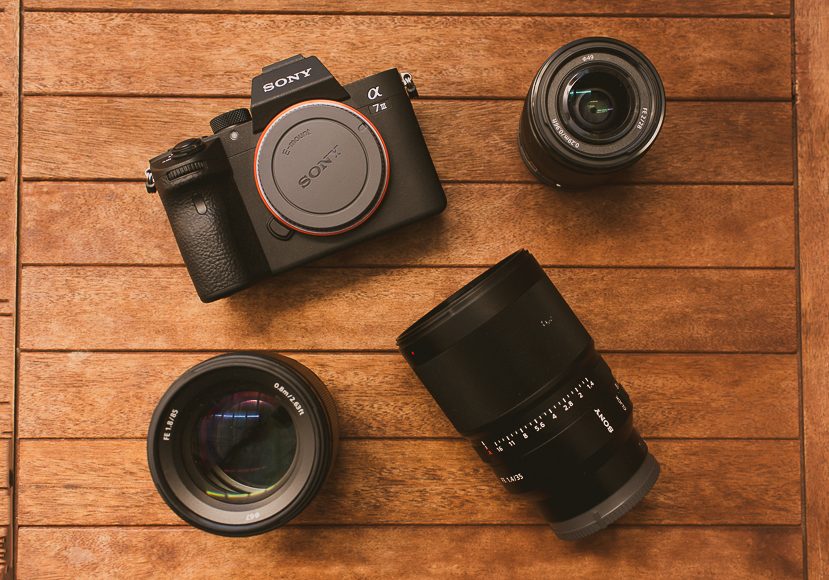
Best Sony Lenses in 2024: Ultimate E-Mount Guide
Which lenses are our top pick of the year so far? Discover what FE & APS-C lenses to use on your Sony Alpha mirrorless camera.
Camera Gear Guides | Lens Guides | Sony Lens Guides | By Mark Condon and Usnea Lebendig, Greg Cromie | Last Updated: May 23, 2025
Shotkit may earn a commission on affiliate links. Learn more.
When it comes to selecting the best Sony lenses for your full-frame or APS-C Alpha body, there are many options.
In fact, I would go so far as to say that even if you stick with just Sony’s first-party lenses, there’s almost too much choice!
Of course, there are countless lens options from brands such as Sigma, Tamron, and Zeiss for every possible genre.

A tough build, fast autofocus performance and exceptional image quality make this versatile zoom a top choice.
In compiling this guide to the best glass for your Sony camera, I examined close to 100 lenses in depth before settling on the final list.
It’s crazy how many options there are. For example, Sony offers five 50mm full-frame nifty-fifty lenses. Which one is best for you?
As a result, our guide covers the 20 best full frame and 10 best APS-C format lenses for Sony E Mount.
Our guide shows you the best Sony E mount lenses and how to maximize each one. Let’s take a look!
What are the Best Sony Lenses in 2024?
| Image | Product | Features | |
|---|---|---|---|
 | Sigma 14-24mm f/2.8 DG DN Art LensOUR #1 CHOICE |
| Check AMAZON Price → Check B&H Price → |
 | Sony FE 16-35mm f/2.8 GM II LensBEST FOR LANDSCAPE PHOTOGRAPHY |
| Check AMAZON Price → Check B&H Price → |
 | Tamron 20-40mm f/2.8 Di III VXD LensIDEAL ENTRY-LEVEL WIDE-ANGLE ZOOM |
| Check AMAZON Price → Check B&H Price → |
 | Sony FE 24-70mm f/2.8 GM II LensGREAT ALL-PURPOSE LENS |
| Check AMAZON Price → Check B&H Price → |
 | Sigma 28-105mm f/2.8 DG DN Art LensEXCELLENT FOCAL RANGE |
| Check AMAZON Price → Check B&H Price → |
 | Sony FE 70-200mm f/2.8 GM OSS II LensGREAT VALUE |
| Check AMAZON Price → Check B&H Price → |
 | Tamron 70-300mm f/4.5-6.3 Di III RXD LensBEST FOR SPORTS AND WILDLIFE PHOTOGRAPHY |
| Check AMAZON Price → Check B&H Price → |
 | Sony FE 100-400mm f/4.5-5.6 GM OSS LensBEST FOR PROS |
| Check AMAZON Price → Check B&H Price → |
 | Sigma 150-600mm f/5-6.3 DG DN OS Sports LensULTIMATE SPORTS ZOOM |
| Check Price → |
 | Sony FE 14mm f/1.8 GM LensGREAT FOR VLOGGING |
| Check AMAZON Price → Check B&H Price → |
Given the many Sony E Mount lenses to choose from, it makes sense to break them down into those for full-frame and those for APS-C format.
While our guide focuses (pardon the pun) on the top entries from leading brands, including Sony, Tamron, Sigma, and Zeiss, there are countless options from smaller third-party manufacturers.
When selecting the best glass for your Sony full frame or APS-C Alpha, it can be a task to see the woods for the trees.
Metaphorically speaking, I’m the woodsman here to cut away the dead wood to reveal the forest of towering beauties. I used to be a competitive axe-thrower before I injured my neck.
Let’s take a look at the 20 best Sony E Mount full-frame lenses, followed by the 10 best APS-C options.
- More: Best Sony Cameras
20 Best Sony E Mount Full Frame Lenses
Sigma 14-24mm f/2.8 DG DN Art Lens
Focal Length: 14-24mm
Filter Diameter: Rear gel filter
Minimum Focus Distance: 27.94cm (11″)
Weight: 795g (28.04oz)
Dimensions: 85 x 131-132.8 mm (3.35 x 5.16-5.23″)
Best Use: Architecture, landscape, and astrophotography
- Flexible focal range
- Constant f/2.8 max aperture
- Works on APS-C Sony cameras
- Affordable ultra-wide zoom
- Lacks image stabilization
- Corner softness wide open
Sigma is one of the leading third-party brands developing high-quality optics for Sony E-mount cameras.
The Sigma 14-24mm f/2.8 DG DN Art lens is a fantastic example of a wide-angle zoom done right! The Sigma is built tough with weather-sealing, a brass mount, and ergonomic design considerations.
If you’re shooting landscapes, architecture, or astrophotography, the Sigma 14-24mm f/2.8 delivers stunning results with exceptional distortion correction and a constant f/2.8 max aperture.
While it doesn’t feature optical image stabilization (most Sony Alpha cameras feature this now), it more than compensates with fast autofocus performance, a focus lock button, and smooth zoom motion.
The Sigma 14-24mm f/2.8 DG DN Art lens achieves optical excellence thanks to an 18-element in 13-group lens assembly, including three aspherical, one FLD, and five SLD elements.
The 11-rounded blade aperture delivers smooth out-of-focus textures, and the front element’s Super Multi-Layer & Nano Porous Coating ensures optimal image clarity.
The Sigma 14-24mm f/2.8 retails for around US$1,400. If you’re after a Sony-branded alternative, check out the Sony FE 12-24mm f/2.8 GM Lens—however, at over double the price of the Sigma, it’s a tough sell!
Sony FE 16-35mm f/2.8 GM II Lens
Focal Length: 16-35mm
Filter Diameter: 82mm
Minimum Focus Distance: 22.1cm (8.7″)
Weight: 547g (1.2lb)
Dimensions: 87.8 x 111.5mm (3.5 x 4.4″)
Best Use: Videography and landscape
- Update G Master zoom
- Fast max aperture
- Weather sealed
- Fast focus performance
- De-click aperture ring
- Expensive option
- Lacks stabilization
The Sony G Master FE 16-35mm f/2.8 GM II lens is an updated version of one of the brand’s most popular lenses.
Its 16-35mm full-frame focal range is ideal for landscape photography, where the flexibility of a wide zoom is crucial.
Sony’s FE 16-35mm f/2.8 is also an excellent choice for videography thanks to its fast f/2.8 max aperture, smooth focus system, and de-clickable aperture ring for silent recording.
The weather-sealed G Master lens offers a durable, ergonomic design in a well-balanced body.
Optical mastery is achieved thanks to a lens assembly including Sony’s XA and Super ED elements, an 11-blade round aperture, and a customizable focus button.
The Sony FE 16-35mm f/2.8 GM II lens retails for around US$2,300 and offers one of the best wide-angle zooms in its class.
The Sony Vario-Tessar T* FE 16-35mm f/4 ZA OSS lens featuring Zeiss optics is a suitable alternative. While it’s significantly cheaper at around US$1,000, the narrower f/4 max aperture will deter many.
Tamron 20-40mm f/2.8 Di III VXD Lens
Focal Length: 20-40mm
Filter Diameter: 67mm
Minimum Focus Distance: 17cm (6.7″)
Weight: 365g (12.9oz)
Dimensions: 74.4 x 86.5mm (2.93 x 3.41″)
Best Use: Landscape and family photography
- Flexible wide prime
- Moisture resistant
- Highly affordable
- Compact and lightweight
- No AF/MF switch or aperture ring
- No stabilization
The Tamron 20-40mm f/2.8 Di III VXD is the unsung hero of the wide-angle E Mount zooms.
It offers a little more reach than your typical 16-35mm offering while still delivering flexibility and genre-specific outcomes.
Landscape and architectural photographers will love the weather-sealed build that’s robust yet lightweight and relatively compact.
Tamron’s 20-40mm f/2.8 Di III VXD features a VXD Linear Motor Focus Mechanism that delivers smooth focus performance.
While the lens doesn’t feature stabilization, the fast f/2.8 maximum aperture ensures optimal exposure performance in any lighting conditions.
While the Tamron doesn’t feature an aperture ring or a quick-access switch to switch from Manual to Autofocus, it’s affordable.
The Tamron 20-40mm f/2.8 Di III VXD retails for around US$700, making it the ideal entry-level wide-angle zoom for any Sony A photographer or videographer.
If you’re looking for an affordable third-party wide-angle lens with a little more reach, the Tamron 17-50mm f/4 Di III VXD is an excellent option that retails for around the same price.
Sony FE 24-70mm f/2.8 GM II Lens
Focal Length: 24-70mm
Filter Diameter: 82mm
Minimum Focus Distance: 21mm (8.3″)
Weight: 695g (1.5lb)
Dimensions: 87.8 x 119.9-152mm (3.5 x 4.7-6″)
Best Use: All-purpose
- Lightweight for its size
- Constant f/2.8 max aperture
- G Master quality and performance
- Fast focus system
- Expensive but worth it
- Minimal focus breathing
The most sought-after FE zoom is the Sony FE 24-70mm f/2.8 GM II with its uncompromised image quality, durable weather-sealed build, and feature-packed offering.
If you’re looking for a single, all-purpose lens for everyday or travel photography, this Sony is for you!
Given the G Master badge, the FE 24-70mm delivers stunning image quality across the zoom range, with corners free of distortion and vignetting.
The weather-sealed zoom features a bright f/2.8 constant max aperture, impressive focus performance, and a de-clickable aperture ring for videography and silent shooting.
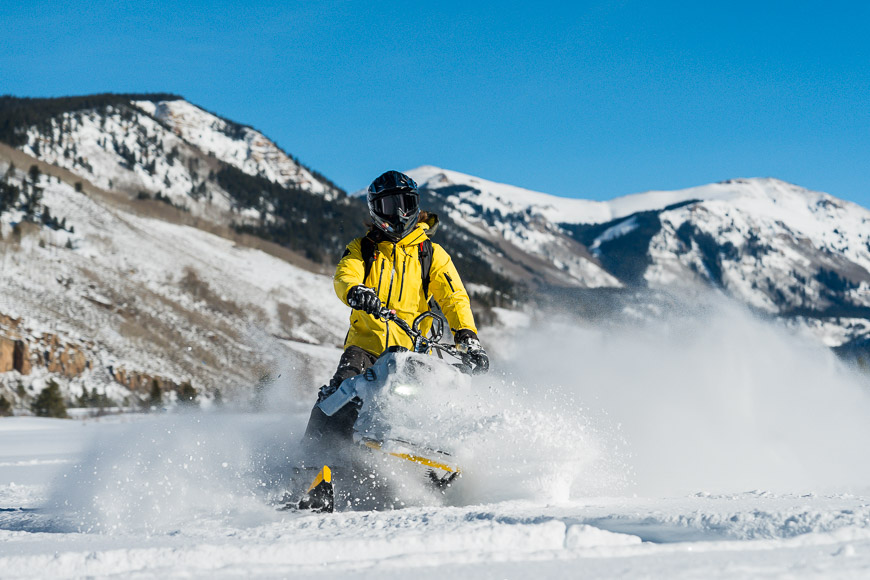
While the Sony FE 24-70mm f/2.8 GM II costs around US$2,300, it’s an investment that delivers positive returns in every composition.
The Sony packs a precision-engineered lens assembly for impeccable visuals, including XA and Super ED elements, Nano AR II, and fluorine coatings.
Read our full review right here!
The Sigma 24-70mm f/2.8 DG DN II lens is a brilliant alternative at a more affordable US$1,200.
Sigma 28-105mm f/2.8 DG DN Art Lens
Focal Length: 28-105mm
Filter Diameter: 82mm
Minimum Focus Distance: 40.1mm (15.8″)
Weight: 990g (2.2lb)
Dimensions: 89 x 160mm (3.5 x 6.3″)
Best Use: Weddings, events, and travel
- All-purpose lens
- Great for travel
- Constant f/2.8 max aperture
- Dual AF-L buttons
- Heavy and bulky
- Some corner softness
The Sigma 28-105mm f/2.8 DG DN Art is an incredibly flexible lens ideal for shooting events such as weddings or travel with a more extended reach.
Sigma’s 28-105mm f/2.8 full-frame zoom for Sony E offers an excellent focal range while delivering a constant and bright f/2.8 max aperture.
It’s a perfect choice for events where you’ll capture wider groups and scenes while also allowing you to zoom in for tighter compositions, such as portraits or key moments.

The Sigma 28-105mm f/2.8 DG DN Art lens is incredibly sharp and offers reasonably fast autofocus performance.
One of the flexible zoom’s downsides is its size and weight—it’s big and bulky with an 82mm front filter thread.
Sigma’s 28-105mm f/2 retails for around US$1,500 and includes premium features such as a de-clickable aperture ring, custom focus button, and AF/MF switch.
If you’d prefer to stick with first-party, the Sony FE 24-105mm f/4 G OSS is a great alternative and retails for around US$1,300.
Sony FE 70-200mm f/2.8 GM OSS II Lens
Focal Length: 70-200mm
Filter Diameter: 77mm
Minimum Focus Distance: 40cm (15.7″)
Weight: 1045g (2.3lb)
Dimensions: 88 x 200mm (3.46 x 7.87″)
Best Use: Portraits, sports and wildlife
- G Master quality and performance
- Fast autofocus system
- Flexible zoom range
- Optical image stabilization
- Excellent for video
- Compatible with FE 1.4x and 2.0x teleconverters
- Heavy to carry all day
- It’s an expensive lens
If you prefer the flexibility and G Master reliability of premium Sony zooms, you’ll likely want to add the Sony FE 70-200mm f/2.8 GM OSS II to your kit.
Like the 24-70mm, the Sony FE 70-200mm f/2.8 GM OSS II delivers incredible image quality and sharpness across the focal range while offering excellent light with a constant f/2.8 max aperture.
Sony’s full-frame 70-200mm zoom offers greater freedom for photographing portraits, sports, and wildlife.
The pro-grade G Master lens features extensive focus, aperture, and optical stabilization control on the lens body for quick access.
It offers a precision lens assembly, ultra-fast linear focus motors, and an 11-bladed circular aperture.
The weather-sealed lens is a beast to hold and features a tripod collar and foot for safe and stable mounting.
The Sony FE 70-200mm f/2.8 GM OSS II is a pro-grade body with class-leading performance and outcomes. As a result, it retails for around US$2,800.
If you’re looking for alternatives, consider the Tamron 70-180mm f/2.8 Di III VC VXD G2, which costs around US$1,300, or the Sigma 70-200mm f/2.8 DG DN OS Sports lens, which costs around US$1,500.
Tamron 70-300mm f/4.5-6.3 Di III RXD Lens
Focal Length: 70-300mm
Filter Diameter: 67mm
Minimum Focus Distance: 0.8m (2.63′)
Weight: 545g (1.2lb)
Dimensions: 77 x 148mm (3 x 5.8″)
Best Use: Sports and wildlife
- Multi-purpose zoom
- Moisture resistant
- Exceptional value for money
- Fast focus performance
- Slow max aperture
- Soft corners
- Distortion at 300mm
- Lacks image stabilization
The Tamron 70-300mm f/4.5-6.3 Di III RXD telephoto zoom lens offers incredible value for money for sports, wildlife, and bird photographers.
Tamron’s full-frame 70-300mm delivers a no-fuss approach to telephoto work, provided low-light outcomes are not a priority.
Given its potential range, the moisture-resistant lens is solidly built yet relatively compact and lightweight.
While the f/4.5-6.3 max aperture is less than ideal in low-light situations, it’s bright enough for most enthusiast-level work and outcomes.
The Tamron 70-300mm f/4.5-6.3 Di III RXD delivers great image quality with a hint of distortion at 300mm that’s easily fixed in post or in-camera.
Tamron’s zoom doesn’t offer an aperture ring or the ability to switch between auto and manual focus quickly. However, it delivers fast-focus performance throughout the range.
At around US$550, the Tamron 70-300mm is exceptional value for money and is an ideal addition to any beginner or enthusiast kit.
A great alternative that includes image stabilization is the Tamron 50-300mm f/4.5-6.3 Di III VC VXD, which retails for around US$800.
Sony FE 100-400mm f/4.5-5.6 GM OSS Lens
Focal Length: 100-400mm
Filter Diameter: 77mm
Minimum Focus Distance: 98cm (3.2′)
Weight: 1395g (3.1 lb)
Dimensions: 93.9 x 205-284mm (3.7 x 8.07-11.2″)
Best Use: Sports and wildlife
- Pro-grade GM lens
- Fast sports and wildlife shooter
- Optical image stabilization
- Included tripod collar and foot
- Manual control switches
- Big and heavy
It’s time to bring out the E Mount big guns! One of the biggest Sony full-frame lenses in the range is the incredible Sony FE 100-400mm f/4.5-5.6 GM OSS.
It’s not for the faint of heart and requires a gym membership to support the 1395g (3.1 lb) weight and 93.9 x 284mm (3.7 x 11.2″) dimensions.
The Sony FE 100-400mm is a pro-grade sports and wildlife lens with incredibly fast focus performance and optimal image quality.
The G Master lens is weather-sealed and includes a tripod collar and foot, as well as a suite of manual switches for fine-tuning focus and optical image stabilization.
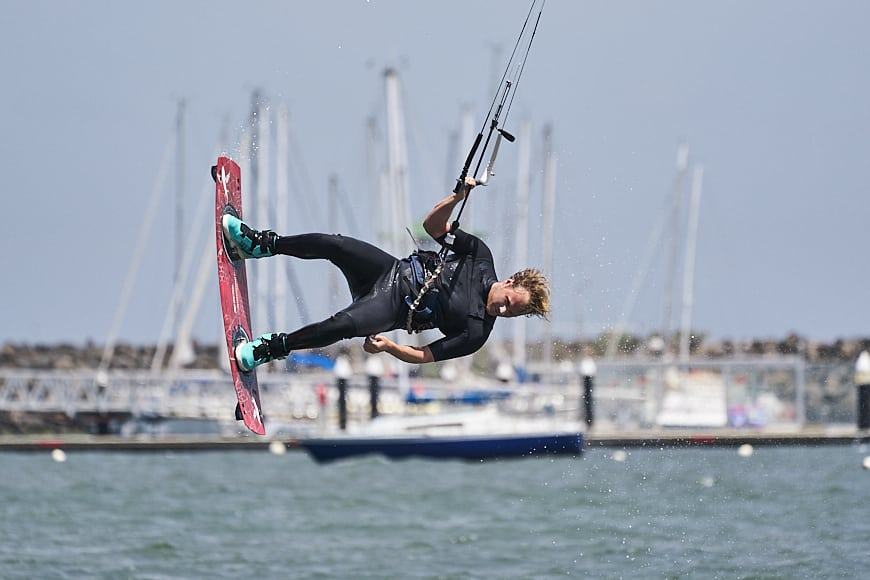
Sony’s telephoto zoom delivers an excellent range, ideal for enthusiasts and pro wildlife, sports, and bird photographers.
Valued at around US$2,500, the Sony offers excellent value for money while delivering sublime image quality and background blur.
Check out our full review here.
Alternatives include the Tamron 50-400mm f/4.5-6.3 Di III VC VXD at around US$1,300 and the Sigma 100-400mm f/5-6.3 DG DN OS Contemporary at around US$950.
Sigma 150-600mm f/5-6.3 DG DN OS Sports Lens
Focal Length: 150-600mm
Filter Diameter: 95mm
Minimum Focus Distance: 58mm (1.9′)
Weight: 2.1kg (4.63lb)
Dimensions: 109 x 267mm (4.3 x 10.5″)
Best Use: Wildlife, sports and birds
- Ultimate sports zoom
- Image stabilization
- Included tripod collar and foot
- Fast focus performance
- Dust and splash-proof
- Big and heavy lens to carry all day
If you’re looking for the ultimate sports photography zoom, the Sigma 150-600mm f/5-6.3 DG DN OS Sports lens won’t disappoint.
It’s a beast of a lens that will deaden your arm in under half a day while producing stunningly sharp images with tight compression and detail.
The dust and splash-proof Sigma 150-600mm f/5-6.3 DG DN OS Sports lens features a robust build, external tripod collar, and a durable tripod foot.
Sigma’s Japan-made telephoto zoom features a zoom torque control, optical stabilization, focus mode, and customization switch to optimize performance and experience.
Given the zoom’s sport-centric performance, the dual-action focusing system delivers fast and reliable speeds while pairing effortlessly with any Sony Alpha camera and its subject-tracking system.
The Sigma 150-600mm f/5-6.3 DG DN OS Sports lens retails for around US$1,500, making it exceptional value for money. It certainly puts the telephoto genre within the reach of most people.
Sony also offers an impressive telephoto sports lens, the FE 200-600mm f/5.6-6.3 G OSS, which retails for around US$2,000.
Sony FE 14mm f/1.8 GM Lens
Focal Length: 14mm
Filter Diameter: Rear gel-filter
Minimum Focus Distance: 25mm (9.8″)
Weight: 460g (1lb)
Dimensions: 83 x 99.8mm (3.3 x 3.9″)
Best Use: Astrophotography
- Lightweight and compact
- Fast maximum aperture
- Aperture de-click for video
- Weather-sealed
- Niche use
- Rear filter system is fiddly
While ultra-wide-angle primes offer a niche solution, a lens like the Sony FE 14mm f/1.8 GM can be very creative.
The Sony G Master 14mm full-frame prime features a stellar lens assembly, which includes a pair of XA elements, a single Super ED Element, and Nano AR II coatings to manage lens flare and ghosting.
With a fast f/1.8 maximum aperture and a 25mm (9.8″) minimal focus distance, the creative applications are endless.
The weather-sealed Sony FE 14mm f/1.8 GM is lightweight and compact and features a de-clickable aperture ring, making it ideal for selfie and vlogging applications.
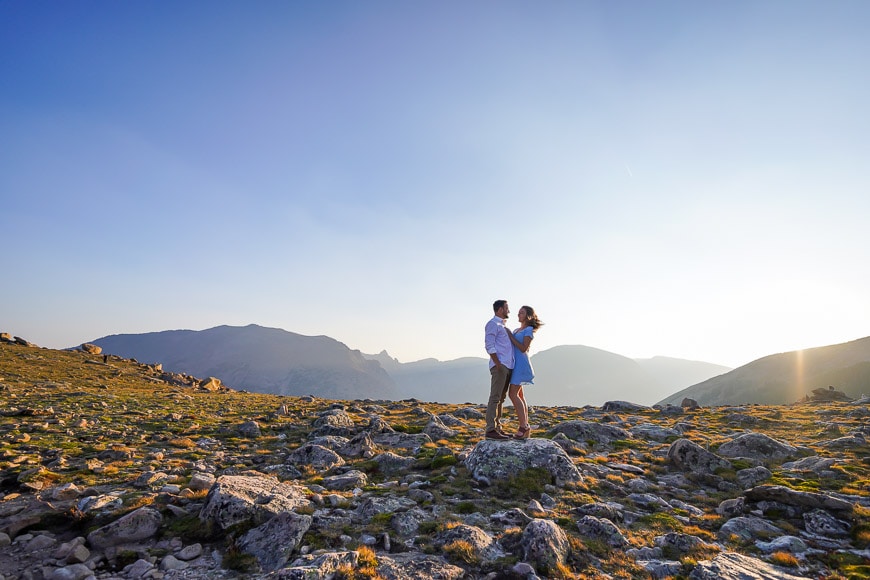
Sony’s wide prime is almost distortion-free and delivers optically correct and sharp images in almost any lighting conditions.
Given the fixed petal-shaped lens hood, the FE 14mm supports rear gel filters that can be fiddly to work with.
The Sony FE 14mm f/1.8 GM retails for around US$1,600, a premium price for a niche lens like this. Read our comprehensive review here.
Sigma’s 14mm f/1.8 DG HSM Art lens retails for around US$1,600, and the beastly Sigma 15mm f/1.4 Fisheye DG DN Art lens retails for around US$2,000.
Sony FE 20mm f/1.8 G Lens
Focal Length: 20mm
Filter Diameter: 67mm
Minimum Focus Distance: 18cm (7.09″)
Weight: 373g (13.16oz)
Dimensions: 73.5 x 84.7mm (2.89 x 3.33″)
Best Use: Landscape and street photography
- Fast wide prime
- Compact and lightweight
- Ideal landscape lens
- Affordable, fast prime lens
- Noticeable focus breathing
The Sony FE 20mm f/1.8 G series full-frame lens is one of the best fast, wide primes.
It offers a wide 94º field of view that’s not so wide it includes your feet in the shot. The fast f/1.8 max aperture ensures optical performance in any lighting conditions while also delivering excellent subject separation and background blur wide open.
While there’s some evident focus breathing, the FE 20mm f/1.8 is another excellent choice for video and vlogging on the go.
The lens is compact and incredibly lightweight, making it an ideal choice for travel or everyday carry.
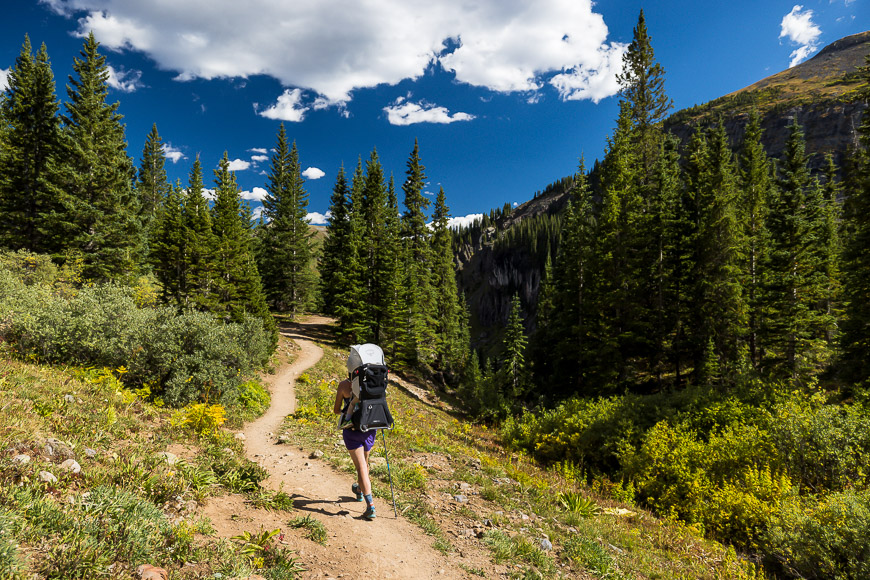
Sony’s FE 20mm f/1.8 G features an optically sharp lens assembly, a focus mode switch, a focus hold button, and a manual aperture ring.
The image quality is brilliant, and the background effects and subject separation are sublime, especially when the subject is close to the foreground.
The Sony FE 20mm f/1.8 G wide prime lens retails for around US$900. Check out our full review here.
The faster Sigma 20mm f/1.4 DG DN Art lens costs around US$900 as well, and the slower ZEISS Batis 18mm f/2.8 lens costs around US$1,550.
Sigma 24mm f/1.4 DG DN Art Lens
Focal Length: 24mm
Filter Diameter: 72mm
Minimum Focus Distance: 25cm (9.8″)
Weight: 510g (18ox)
Dimensions: 75.7 x 97.5mm (3 x 3.8″)
Best Use: Landscape and street
- Wide maximum aperture
- Super image quality
- Lightweight
- Affordable, fast prime lens
- Corner softness until stopped down
A wide-angle prime lens with a fast maximum aperture is a must-have in any prime lens kit, and the full-frame Sigma 24mm f/1.4 DG DN Art lens is an excellent option.
The Sigma 24mm f/1.4 produces a wide 84.1º field of view that hits the landscape photography sweet spot for many. It’s also an excellent focal length for street photography, where more context is desired in the composition.
Sigma’s 24mm f/1.4 DG DN Art prime is relatively lightweight and compact.
The 11-bladed round diaphragm delivers a fast max aperture, sublime subject separation, and pleasing background effects wide open.
However, there’s evidence of vignetting and corner softness wide open – this dissipates as you stop down.

The durable Sigma 24mm f/1.4 DG DN lens features an aperture ring, focus mode switch, focus hold button, and a brass lens mount assembly. It retails for around US$800. Be sure to read our full review.
Sigma also offers a 24mm f/2 DG DN Contemporary lens at around US$640 and a 24mm f/3.5 DG DN Contemporary lens at around US$550.
Alternatively, the Sony FE 24mm f/1.4 G Master lens is the cream of the crop (see our review) and retails for around US$1,400.
Sony FE 35mm f/1.8 Lens
Focal Length: 35mm
Filter Diameter: 55mm
Minimum Focus Distance: 22.1cm (8.7″)
Weight: 281g (9.9oz)
Dimensions: 65.6 x 73mm (2.58 x 2.87″)
Best Use: Everyday, street, and travel
- Natural field of view
- Dust and weather-sealed
- Wide max aperture
- Travel-friendly size and weight
- Excellent vlog and video lens
- Lacks image stabilization
One of the most sought-after prime lens focal ranges is a neat 35mm. Thanks to its 63º field of view, it provides ample context in any composition.
The Sony FE 35mm f/1.8 is an incredibly versatile prime lens that’s suitable for various genres, including travel, street photography, family snaps, and even portraits.
Thanks to its wide f/1.8 maximum aperture and 9-bladed round aperture, the full-frame 35mm f/1.8 produces excellent center sharpness, smooth out-of-focus falloff, and background blur.
Sony’s dust- and weather-sealed FE 35mm f/1.8 for E mount is lightweight and compact and takes up little room in a kit bag.
Furthermore, it’s another great choice for videography and vlogging, especially when carrying a Sony camera in selfie mode.
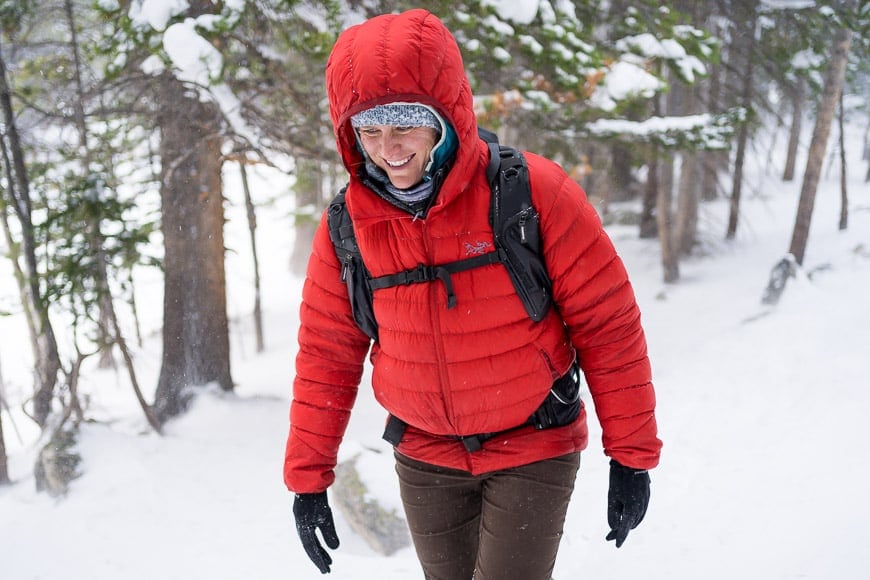
While the lens lacks an aperture ring, it’s robust and features a single focus hold button and a focus mode switch.
The Sony FE 35mm f/1.8 delivers excellent image quality with refined sharpness stopped down a little.
Sony’s full-frame 35mm retails for around US$750. Given this focal length’s popularity, there are plenty of alternatives, too! Read our review to learn more.
The Sigma 35mm f/1.4 DG DN Art lens with its wider aperture retails for around US$900, and the Sigma 35mm f/2 DG DN Contemporary lens retails for around US$640.
Sigma 40mm f/1.4 DG HSM Art Lens
Focal Length: 40mm
Filter Diameter: 82mm
Minimum Focus Distance: 40cm (1.31′)
Weight: 1.2kg (2.6lb)
Dimensions: 88 x 138.9mm (3.45 x 5.47”)
Best Use: Fine art and portraits
- Fast f/1.4 max aperture
- Excellent image sharpness and clarity
- Weather and dust-resistant
- Impressive value for money
- Super heavy for a standard prime
- Lacks an aperture ring
The Sigma 40mm f/1.4 DG HSM Art lens is one of the sharpest standard prime lenses available for Sony full-frame E mount.
Developed for fine art and portrait applications, the Sigma 40mm offers a near-native 56.8º field of view and exceptional low-light performance thanks to its wide f/1.4 max aperture.
The weather and dust-resistant Sigma isn’t a tiny or pocketable standard prime. It’s massive, with an 82mm filter thread and a heavy 1.2kg (2.6lb) weight.
However, the Sigma 40mm delivers excellent image quality with edge sharpness and optimal distortion compensation.
At f/1.4, the center sharpness is spot-on, and the background blur and bokeh are sublime. The wider focal distance makes it a competent environmental portrait lens, allowing for more context in each shot.
Sigma’s Hyper Sonic Motor drives fast and near-silent focus performance.
Despite its considerable size and weight, the Sigma 40mm f/1.4 DG HSM Art lens retails for around US$800. It’s a lot of lens for a great price!
While fewer people gravitate towards 40mm full-frame lenses, there are still plenty of options, including the more compact and portable Sony FE 40mm f/2.5 G, which retails for around US$600.
Sony FE 50mm f/1.2 GM Lens
Focal Length: 50mm
Filter Diameter: 72mm
Minimum Focus Distance: 40cm (1.3′)
Weight: 778g (1.7lb)
Dimensions: 87 x 108mm (3.4 x 4.3″)
Best Use: Portraits and products
- Ultimate nifty-fifty
- Excellent build quality
- G Master speed and performance
- Shallow depth of field
- Gorgeous bokeh
- Pro-grade price
- Strong focus breathing
While many seek a 24mm or 35mm fast full-frame prime, almost every Sony E mount photographer deserves a nifty fifty in their kit!
A 50mm full-frame lens delivers an appealing 47º field of view, which is excellent for tighter street shots, product work, and portraiture.
The ultimate Sony nifty-fifty is the weather-resistant FE 50mm f/1.2 G Master lens.
It’s robust, relatively compact, and balances perfectly on any Sony full-frame Alpha body.
The Sony FE 50mm f/1.2 GM features a tactile aperture ring, a smooth-glide focus ring, a focus mode selection switch, and a pair of customizable focus hold buttons.
The precision lens assembly, which includes three XA (Extreme Aspherical) elements, ensures image quality, sharpness, and color reproduction.
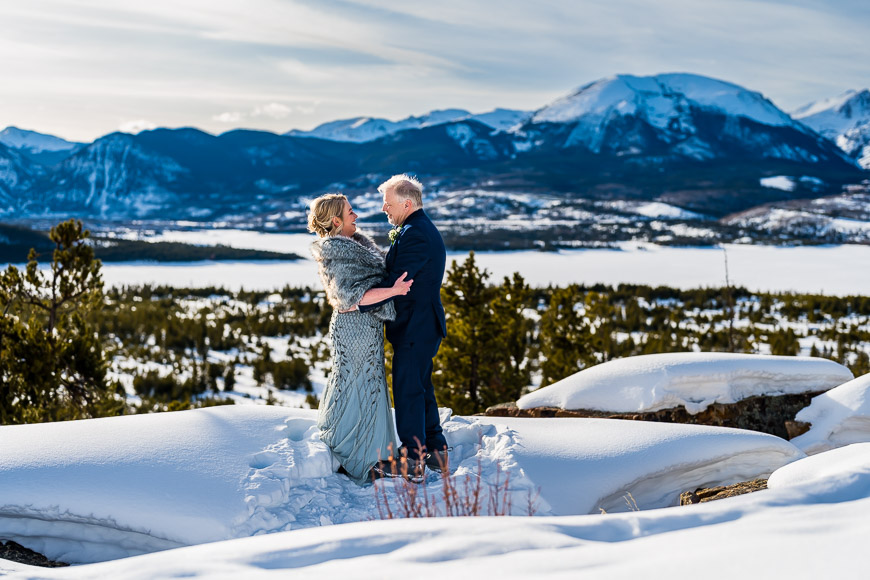
Centre sharpness is impressive, and the background blur, bokeh, and highlights are sublime.
One of the most impressive features of the FE 50mm f/1.2 is the ultra-fast focus system driven by four XD Linear AF motors.
A full-frame fast prime of this quality doesn’t come cheap, and the Sony retails for around US$2,000.
Check out our comprehensive review here.
Given the popularity of the 50mm focal range, there’s a wide range of alternative lenses, including the Sony FE 50mm f/1.4 GM, Sony FE 50mm f/1.8, Sony FE 50mm f/2.5 G, and the Sony Planar T* FE 50mm f/1.4 ZA.
Sigma also offers a fast lens with the Sigma 50mm f/1.2 DG DN Art lens, which retails for around US$1,400.
Sony FE 85mm f/1.4 GM II Lens
Focal Length: 85mm
Filter Diameter: 77mm
Minimum Focus Distance: 80cm (2.62′)
Weight: 642g (22.6oz)
Dimensions: 84.7 x 107.3mm (3.3 x 4.2″)
Best Use: Portraits
- Ultimate Sony portrait lens
- Shallow depth of field
- GM quality and speed
- Fast autofocus performance
- Weather sealed
- Relatively lightweight
- Obvious flare in bright sun
A portrait photographer’s dream lens looks like this: 85mm full-frame focal distance and a fast, wide maximum aperture.
The Sony FE 85mm f/1.4 GM II fits the bill with its ideal 29º field-of-view, fast f/1.4 maximum aperture for sublime subject separation, and impressive image quality.
Sony’s 85mm portrait champion features dust and moisture sealing, a sturdy build, and a de-clickable and lockable ring that provides ultimate aperture control.
The lens also features a focus mode switch that effortlessly switches between manual and auto. Finally, the Sony FE 85mm f/1.4 G Master II has two customizable focus hold buttons on the barrel.

Optically, the FE 85mm f/1.4 GM II delivers exceptional image sharpness, color reproduction, and a thin focal plane that ensures excellent bokeh and background effects.
Delivering the goods is an 11-bladed round aperture, a lens assembly including XA and ED elements, and a special Fluorine lens coating to mitigate flare and ghosting.
The near-flawless Sony FE 85mm f/1.4 GM II is one of the best E-mount lenses available and retails for around US$1,800.
Alternatively, if you’re an enthusiast looking to improve your portrait and product photography, the Sony FE 85mm f/1.8 offers excellent quality and performance for around US$600.
Sigma 85mm f/1.4 DG DN Art Lens
Focal Length: 85mm
Filter Diameter: 77mm
Minimum Focus Distance: 85cm (2.7′)
Weight: 625g (1.38lb)
Dimensions: 82.8 x 96.1mm (3.26 x 3.78″)
Best Use: Portraits
- Exceptional image quality and sharpness
- Shallow depth of field
- Gorgeous background blur and bokeh
- Weather-sealed
- De-clicking aperture ring
- Excellent videography lens
- Noticeable distortion without in-camera correction
Not to be outdone, Sigma also offers an excellent 85mm portrait option with the Sigma 85mm f/1.4 DG DN Art lens.
Sigma’s 85mm f/1.4 DG DN Art lens is considered one of the sharpest lenses gracing an E-mount.
The lens weighs 625g (1.38lb), fits a 77mm filter, and balances beautifully on any Sony a7 or a9 camera body.
Valued at around US$1,190.00, the Sigma delivers exceedingly sharp images with a little distortion evident when in-camera correction is turned off.
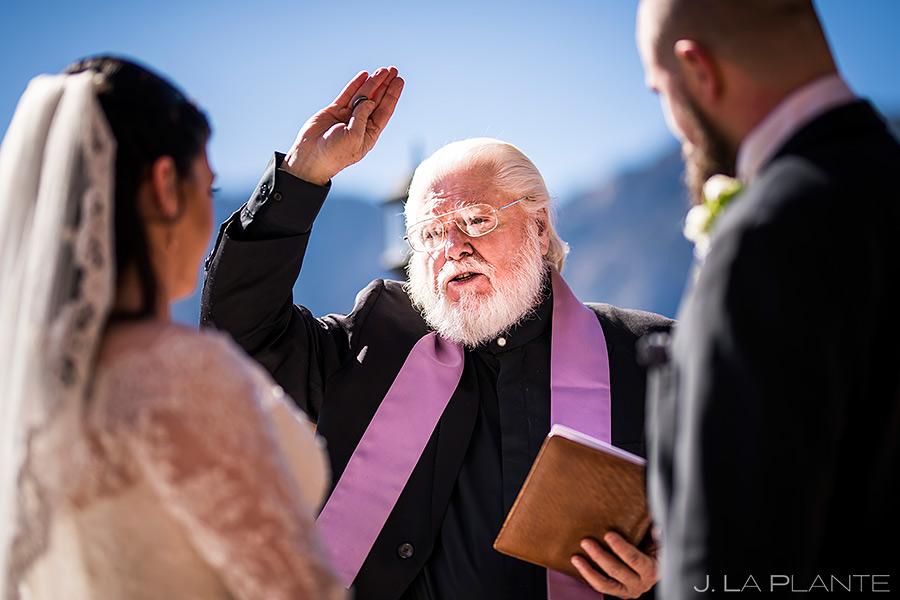
The wide f/1.4 maximum aperture allows for excellent low-light performance, shallow depth of field, and fantastic subject separation and background effects.
Sigma always goes the extra mile, and they’ve created a lens assembly featuring five SLD, four HR, and one aspherical element. Plus, a Super Multi-Layer coating has been applied to the lens elements to mitigate ghosting and flare.
The water-resistant Sigma 85mm f/1.4 DG DN Art lens features a focus mode switch, a customizable AFL button, and a de-clickable aperture ring.
Given the focal distance, aperture, smooth focus, and aperture controls, the 85mm also delivers exceptional videography outcomes.
Another excellent portrait lens option is the ZEISS Batis 85mm f/1.8 Lens for Sony E, which retails for around US$1,250.
Head to our full review for more details!
Tamron 90mm f/2.8 Di III VXD Macro Lens
Focal Length: 90mm
Filter Diameter: 67mm
Minimum Focus Distance: 23.1cm (9.1″)
Weight: 600g (1.4lb)
Dimensions: 79.2 x 126.5mm (3.1 x 5″)
Best Use: Macro and portraits
- Excellent 1:1 macro reproduction
- Fast autofocus performance
- Optically sharp
- Close 23.1cm (9.1″) working distance
- Great portrait performance
- Highly affordable
- Lacks image stabilization
While 85-90mm is an ideal focal range for product and portrait photography, it’s also a perfect focal length for macro photography.
A 90mm macro lens, such as the Tamron 90mm f/2.8 Di III VXD Macro, provides enough working distance between the front lens element and your macro subject.
Tamron’s 90mm f/2.8 Macro lens delivers accurate 1:1 macro reproduction with crisp details, punchy color reproduction, and a close 23.1cm (9.1″) working distance.
The tight 27º field of view allows for tight compressions, and the f/2.8 maximum aperture delivers defined subject separation without creating too fine a depth.

For its size, the Tamron 90mm f/2.8 Di III VXD Macro is relatively light, allowing comfortable yet controlled handheld macro work.
While the Tamron lacks an aperture ring for quick control, it does feature a focus mode switch and a single customizable focus hold button.
The Tamron 90mm f/2.8 Di III VXD Macro lens retails for around US$700, making it an excellent choice for those new to the genre.
Furthermore, a 90mm lens of this nature is also ideal for product, food, and portrait photography—that’s a lot of bang for your buck!
Sony’s answer to the 90mm macro market is the Sony FE 90mm f/2.8 Macro G OSS lens that retails for around US$1,100.
Sony FE 135mm f/1.8 GM Lens
Focal Length: 135mm
Filter Diameter: 82mm
Minimum Focus Distance: 70cm (2.3′)
Weight: 950g (2.09lb)
Dimensions: 89.5 x 127mm (3.52 x 5″)
Best Use: Portraits and products
- G Master performance and quality
- Fast maximum aperture
- Ideal product photography lens
- De-clicking aperture ring for video
- Dual-focus hold buttons
- Excellent image sharpness
- A little heavy
- Hard to fault
While 50mm and 85mm full-frame E-mount lenses are ideal for portraiture, a slightly longer lens with tighter compression is also worth considering.
The Sony FE 135mm f/1.8 G Master lens offers gold-standard performance in genres including portraiture, food, and product photography.
Sony’s 135mm is a big boy weighing 950g (2.09lb) and supporting 82mm filters on the front.
Regardless of size, the FE 135mm f/1.8 delivers a tight 18º field of view perfect for facial portraits and headshots.
Sony wizardry and lens assembly, including XA, Super ED, and ED elements, produce unparalleled sharpness throughout the aperture range.
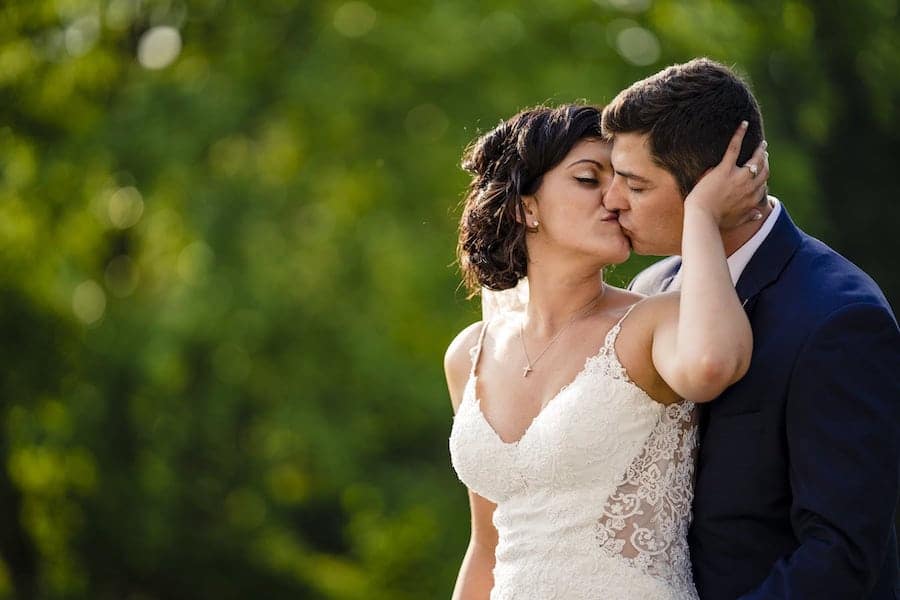
The fast f/1.8 aperture and 11 rounded-blade diaphragm produce excellent subject separation and jaw-dropping bokeh in all lighting conditions.
Even stopped down to f/4, background blur is non-distracting and makes the foreground subject pop from the screen.
The weather-sealed full-frame Sony lens features a de-clickable aperture ring, focus mode switch, focus limiting switch, dual customizable focus control buttons, and a smooth, well-dampened focus ring.
It’s a joy to shoot with, especially when paired with a Sony Alpha body boasting in-body image stabilization.
The Sony FE 135mm f/1.8 G Master lens retails for around US$2,100, making it a tremendous must-own lens for enthusiast-level photographers (or videographers).
We have a comprehensive review right here.
A great alternative is the ZEISS Batis 135mm f/2.8 lens, which retails for around US$1,750.
Sony FE 400mm f/2.8 GM OSS Lens
Focal Length: 400mm
Filter Diameter: 40.5 drop-in filter
Minimum Focus Distance: 2.7m (8.86′)
Weight: 2895g (6.4lb)
Dimensions: 158.1 x 359mm (6.22 x 14.13″)
Best Use: Wildlife and birds
- Pro-grade wildlife telephoto lens
- Fast maximum aperture
- Optical image stabilization
- G Master build and speed
- Fixed tripod collar and foot
- Weather-sealed
- Function, stabilization, and focus switches galore
- Incredibly big
- Small mortgage required for purchase
While many ‘must-have’ primes and zooms tick genre-specific boxes, sometimes you need a specialty tool to get the job done.
Professional sports and wildlife photographers are used to working with telephoto and super-telephoto lenses to grant them reach into domains they must not tread.
Standing on the sidelines or at the top of a gully means you need optical reach to effectively compose a shot and get your subject in crisp focus.
The king of the E-mount long-lens family is the Sony FE 400mm f/2.8 GM OSS super-telephoto lens.
Sony’s Monarch features a highly durable magnesium alloy body with excellent ruggedness and weather resistance.
Make no mistake—this is a huge lens, measuring 158.1 x 359mm (6.22 x 14.13″) and weighing an arm-deadening 2895g (6.4lb).
Even when mounted to a larger pro-grade Sony a7R V or Sony a1 body, it dominates the combo and makes the camera body look like a toy.
Being a gold-standard G Master, the 400mm full-frame lens delivers a 6° 10′ field of view and a brilliant f/2.8 maximum aperture to define distant subjects even when on the move.
Speaking of moving subjects, the Sony FE 400mm f/2.8 GM OSS features optical image stabilization and incredibly fast focus speed to match the subject tracking performance of any Sony flagship camera.
Focus performance is driven by Sony’s XD Linear Motor AF System for reliability, accuracy, and speed.
The G Master zoom offers an extensive range of control switches to manage image stabilization, focus, and custom function presets.
The ultra-sharp Sony FE 400mm f/2.8 GM OSS lens retails for around US$12,000 – eye-watering money!
If 400mm isn’t super-telephoto enough for your work, Sony also offers the FE 600mm f/4 GM OSS lens for around US$13,000 – even more eye-watering.
Best Sony E Mount APS-C Lenses
Sony E 15mm f/1.4 G Lens
Focal Length: 15mm (22.5mm full-frame equivalent)
Filter Diameter: 55mm
Minimum Focus Distance: 17cm (6.7″)
Weight: 219g (7.7oz)
Dimensions: 66.6 x 69.5mm (2.6 x 2.7″)
Best Use: Astrophotography and architecture
- Ultra-wide prime
- Fast f/1.4 maximum aperture
- Compact and lightweight
- Excellent focus performance
- Great for vlogging
- Niche applications
- Some flaring
It’s fair to say that for every standard focal length available in the Sony FE full-frame lens range, there’s an equivalent in the Sony E APS-C lens range.
One of the widest APS-C E mount lenses is the Sony E 15mm f/1.4 G with its 22.5mm full-frame equivalent focal range.
The Sony E 15mm is an ideal lens for anyone wishing to shoot architecture or astrophotography. It’s also a lightweight and compact wide-angle option ideal for vlogging on the go.
Sony’s dust and weather-sealed E 15mm f/1.4 G features a de-clickable manual aperture ring, a dampened manual focus ring, a focus mode switch, and a customizable focus function button.
Image quality is excellent thanks to a lens assembly that includes Super ED, ED, and Aspherical Elements.
The fast and wide f/1.4 max aperture ensures optimal light intake and pleasing background effects when shooting wide open.
Sony’s 15mm also delivers fast and reliable focus performance, making it a fun lens to work with.
At US$700, the lens is excellent value for money and a must-have for any Sony a6XXX owner looking for a wide prime.
If you want to go even wider, the Sony E 11mm f/1.8 offers a 16.5mm full-frame equivalent well suited to art and architecture.
Sigma 23mm f/1.4 DC DN Contemporary Lens
Focal Length: 23mm (35mm full-frame equivalent)
Filter Diameter: 52mm
Minimum Focus Distance: 25cm (9.8″)
Weight: 340g (12oz)
Dimensions: 65.8 x 76.9mm (2.6 x 3″)
Best Use: Street and travel photography
- Excellent travel prime
- Fast maximum aperture
- High build quality
- Optically sharp
- Fast focus performance
- Dust and splash-resistant
- Obvious focus breathing
- Niche applications
A fan favorite APS-C focal range is 23mm, which delivers a 35mm full-frame equivalent and an ideal field of view for street photography, family snaps, and travel.
The Sigma 23mm f/1.4 DC DN Contemporary lens is incredibly well built, dust and splash-proof, and retains a compact size and well-balanced weight.
While it’s a no-frills kind of lens that lacks the Sony G and GM bells and whistles, it’s incredibly effective in the field.
Thanks to its fast f/1.4 max aperture, the Sigma 23mm f/1.4 produces excellent image quality in almost any lighting condition.
It’s an optically sharp lens thanks to a precision lens assembly that includes three SLD and two aspherical lens elements.
Thanks to a 9.8″/25 cm minimal focus distance, it’s also an excellent choice for artistic closeups with a shallow depth of field and subject separation.
The Sigma 23mm f/1.4 DC DN Contemporary lens retails for around US$600. For comparison, the Sony Sonnar T* E 24mm f/1.8 ZA lens retails for around US$800.
Sony E 35mm f/1.8 OSS Lens
Focal Length: 35mm (52.5mm full-frame equivalent)
Filter Diameter: 49mm
Minimum Focus Distance: 30cm (11.81″)
Weight: 154g (5.43oz)
Dimensions: 63 x 45mm (2.48 x 1.77″)
Best Use: Everyday and environmental portraits
- Ultra-compact and lightweight
- Nifty-fifty focal range
- Optical image stabilization
- Cheap and cheerful
- Wide max aperture
- Lacks weather-sealing
- Corner softness wide open
- Poor closeup sharpness
Many argue that the APS-C 35mm is the nifty-fifty of the crop sensor world thanks to its 52.5mm full-frame equivalent focal range.
The Sony E 35mm f/1.8 OSS is one of the best examples of an APS-C lens that fits the nifty-fifty bill.
It offers a versatile 52.5mm full-frame equivalent focal range, ideal for various applications, including environmental portraits.
The lens is excellent in all lighting conditions, thanks to its fast and wide f/1.8 maximum aperture and Sony’s Optical SteadyShot image stabilization.
While it isn’t weather-sealed, it’s incredibly compact and lightweight—only 154g (5.43oz) with a 49mm filter thread—and it will fit in your jacket pocket!
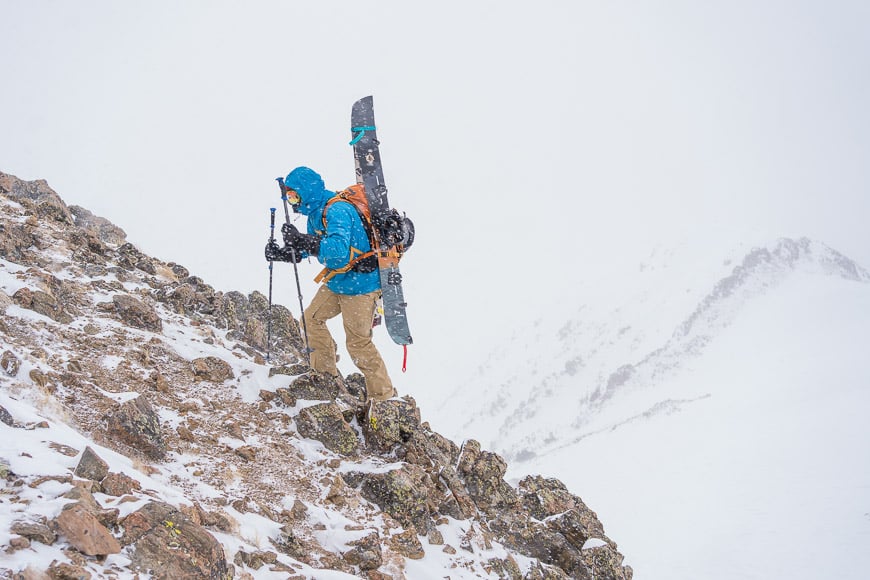
Sony’s E 35mm f/1.8 OSS for APS-C cameras delivers excellent image quality with excellent center sharpness at f/1.8 and stronger edge sharpness at f/4.
When paired with an a6400 or a6700, the E 35mm f/1.8 delivers fast and reliable focus performance.
The Sony E 35mm f/1.8 OSS (APS-C nifty-fifty-ish) retails for around US$465, making it excellent value for money and one of the best lenses to have in your kit.
An alternative is the Sigma APS-C 30mm f/1.4 DC DN Contemporary lens, which has a 45mm full-frame equivalent and a retail price of around US$370. You could also pick up the ZEISS Touit 32mm f/1.8 lens for around US$720.
Sony E 50mm f/1.8 OSS Lens
Focal Length: 50mm (75mm full-frame equivalent)
Filter Diameter: 49mm
Minimum Focus Distance: 39cm (1.28′)
Weight: 202g (7.13oz)
Dimensions: 61.98 x 61.98mm (2.44 x 2.44″)
Best Use: Portraits and products
- Excellent portrait focal distance
- Fast maximum aperture
- Smooth background blur and bokeh
- Compact – nearly pocketable
- Optical image stabilization
- Lacks weather-sealing
- Signs of vignetting wide open
The Sony E 50mm f/1.8 OSS lens is one of the best portrait and product photography lenses for any Sony APS-C camera.
The 50mm APS-C focal distance delivers a 75mm full-frame equivalent that offers better compression for tighter compositions, including headshots.
Available in a glossy black or glossy silver finish, the Sony E 50mm f/1.8 is ultra-compact at 61.98 x 61.98mm (2.44 x 2.44″) and weighs a measly 202g (7.13oz).

Despite its size, the Sony E 50mm delivers excellent image quality, and the wide f/1.8 max aperture delivers excellent subject separation, background blur, and center sharpness.
While it’s not a bokeh beast, the background effects are non-distracting and appealing. It’s also important to note that wide open at f/1.8 there are some signs of corner vignetting that dissipate when stopped down a little.
However, given the pocketable Sony E 50mm f/1.8 retails for around US$250, it’s exceptional value for money and is a great option for new photographers looking for a portrait prime.
For comparison, the ZEISS Touit 50mm f/2.8M Macro, despite being a 1:1 macro, is a great portrait lens that retails for around US$1,000.
Sigma 56mm f/1.4 DC DN Contemporary Lens
Focal Length: 56mm (84mm full-frame equivalent)
Filter Diameter: 55mm
Minimum Focus Distance: 50cm (1.6′)
Weight: 280g (9.88oz)
Dimensions: 66.5 x 59.5mm (2.62 x 2.34″)
Best Use: Portraits and products
- Compact design
- Wide maximum aperture
- Weather-sealed
- Lightweight and compact
- Ideal product photography lens
- Some focus sounds in video
One of the most sought-after and praised third-party APS-C lenses for Sony E mount cameras is the Sigma 56mm f/1.4 DC DN Contemporary lens.
It’s such a popular lens that Sigma also offers it for Fujifilm X, Leica L, Canon EF-M and RF, Nikon Z, and micro-four-thirds
The APS-C 56mm focal distance delivers a tight and well-compressed 84mm full-frame equivalent with a 28.5º field of view, ideal for stunning portraits and products.
Its optical design includes ten elements in six groups, including a single SLD element and a pair of aspherical elements for distortion-free outcomes.
The fast f/1.4 aperture delivers sublime center sharpness, well-defined subject separation, and delicious background blur and bokeh.
Despite all that optical cleverness, the weather-sealed Sigma 56mm f/1.4 DC DN Contemporary lens is compact and lightweight and supports 55mm filters.
Sigma’s Stepping Motor AF System delivers fast and reliable autofocus performance, especially when paired with a newer Sony a6000 APS-C camera.
Considering all that, the Sigma 56mm f/1.4 DC DN Contemporary lens retails for around US$530, making it exceptional value for money.
It’s the kind of lens that should be in almost every prime lens lover’s kit! Check out our review to learn more.
Sigma 10-18mm f/2.8 DC DN Contemporary Lens
Focal Length: 10-18mm (15-27mm full-frame equivalent)
Filter Diameter: 67mm
Minimum Focus Distance: 11.7cm (4.6″)
Weight: 255g (9oz)
Dimensions: 72.2 x 64mm (2.8 x 2.5″)
Best Use: Landscape and astrophotography
- Flexible wide-angle lens
- Lightweight yet robust
- Minimal signs of distortion
- Dust and splash-resistant
- Fast focus performance
- Some ghosting in bright conditions
- Corner softness at 10mm
While fast APS-C prime lenses are essential, there’s always a time and place for a flexible zoom lens to get the job done.
Anyone wanting to capture stunning landscape or astrophotography shots should pick up the Sigma 10-18mm f/2.8 DC DN Contemporary lens.
The wide-angle zoom delivers a 15-27mm full-frame equivalent focal range perfect for any wide-angle shoot.
While the Sigma 10-18mm f/2.8 is compact and light, the front element supports 67mm ND or polarizing filters for optimal outcomes.
Sigma’s wide APS-C zoom is dust and moisture-sealed for outdoor use and balances perfectly on Sony a6000 camera bodies. However, the petal-shaped lens hood is wide and flared.
The Sigma lens delivers excellent image quality throughout the focal range, and the constant f/2.8 maximum aperture provides excellent center sharpness.
It should be noted that wide open at 10mm, it shows corner softness and a slight ghosting in bright sunlight. However, it’s not a deal-breaker.
Sigma’s 10-18mm f/2.8 DC DN Contemporary lens for APS-C delivers fast, reliable focus performance and excellent close-focus outcomes with a minimal focus distance of 11.7 cm (4.6″).
The Sigma wide zoom retails for around US$660. Two great alternatives include the Sony E 10-20mm f/4 PZ G, which costs around US$750, or the Tamron 11-20mm f/2.8 Di III-A RXD lens, which costs around US$830.
Sony E 16-55mm f/2.8 G Lens
Focal Length: 16-55mm (24-82.5mm full-frame equivalent)
Filter Diameter: 67mm
Minimum Focus Distance: 33cm (1.08′)
Weight: 494g (1.09lb)
Dimensions: 73 x 100mm (2.87 x 3.94″)
Best Use: Multi-purpose lens ideal for travel and everyday use
- Excellent all-purpose lens
- Fast autofocus performance
- G Master build quality
- Weather-sealed
- Constant f/2.8 max aperture
- Customizable focus button
- Lacks image stabilization
- Corner softness wide open at 55mm
- Distortion and vignetting at 16mm
Regardless of being full-frame or APS-C, every camera deserves a killer all-purpose kit lens!
The Sony E 16-55mm f/2.8 G offers incredible performance, image quality, and versatility, making it an excellent starting point for anyone new to photography.
Sony’s APS-C E 16-55mm f/2.8 G lens isn’t cheap! It retails for around US$1,400. So what makes the lens so special (and expensive?)?
The Sony E 16-55mm produces a 24-82.5mm full-frame equivalent focal distance while delivering a constant f/2.8 maximum aperture.
The weather-sealed G series lens features excellent build qualities and durability, a well-dampened focus and zoom ring, a focus mode switch, and a single customizable focus hold button.
Internally, the 16-55mm G lens assembly includes four aspherical elements, three Extra-Low Dispersion elements, and Nano AR and Fluorine coatings for optical clarity.
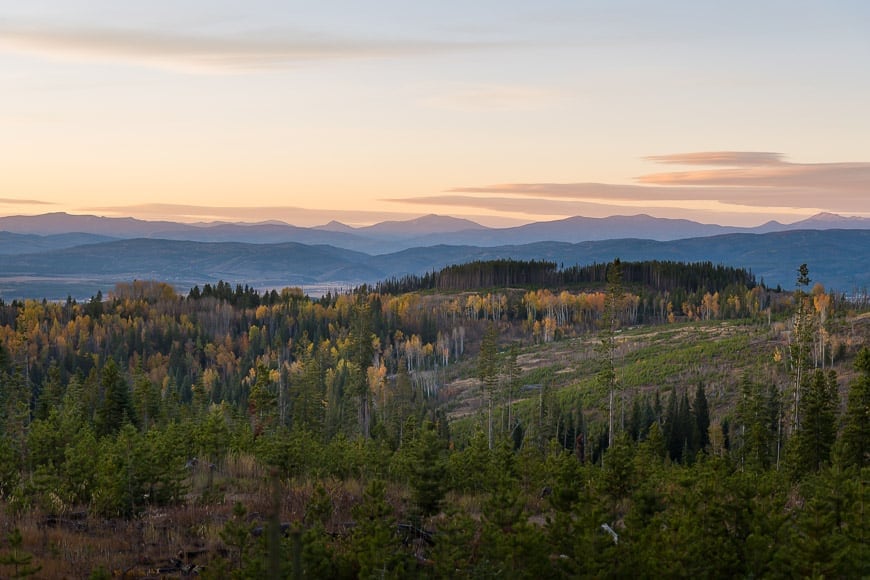
Sony’s E 16-55mm f/2.8 G lens weighs a decent 494g (1.09lb) and features a 67mm filter thread. However, the lens is a little front-heavy on a lighter APS-C Sony camera.
Read our comprehensive review for more details.
For the premium price, it would’ve been better for the multi-purpose zoom to include image stabilization.
While the image quality is excellent throughout the focal range, there’s a slight corner softness at 55mm and slight distortion at the 16mm end.
An excellent alternative that retails for around US$700 is the Sony Vario-Tessar T* E 16-70mm f/4 ZA OSS lens. While its f/4 max aperture isn’t ideal, it does feature image stabilization.
Tamron 17-70mm f/2.8 Di III-A VC RXD Lens
Focal Length: 17-70mm (25.5-105mm full-frame equivalent)
Filter Diameter: 67mm
Minimum Focus Distance: 19mm (7.5″)
Weight: 525g (1.2lb)
Dimensions: 74.6 x 119.3 – 146.5mm (2.9 x 4.7 – 5.77″)
Best Use: Landscapes to portraits
- Affordable kit zoom alternative
- Image stabilization
- Constant f/2.8 max aperture
- Quiet and quick autofocus performance
- Messy bokeh
- Obvious flare in bright conditions
Given the benefits of owning a flexible kit zoom, the Tamron 17-70mm f/2.8 Di III-A VC RXD is a worthy contender.
Tamron’s 17-70mm f/2.8 Di III-A VC RXD is quite a mouthful, yet it’s an incredibly versatile lens. Its 25.5-105mm full-frame equivalent focal range covers everything from landscapes to wildlife.
The constant f/2.8mm aperture delivers good low-light outcomes and smooth out-of-focus transitions wide open; however, the bokeh can sometimes be a little messy and distracting.
This versatile prime lens features external zoom actuation, extending its dimensions from 74.6 x 119.3mm to 146.5mm (2.9 x 4.7 to 5.77 inches). It’s also a heavier APS-C lens, weighing 525g (1.2 lbs).
One of the best features of the Tamron is the inclusion of image stabilization to further support low-light performance and outcomes.
Tamron’s 17-70mm f/2.8 delivers fast and reliable autofocus performance thanks to the near-silent RXD Stepping AF motor.
At around US$700, the Tamron is one of the most affordable APS-C kit lens alternatives. It delivers greater reach than a standard 16-55mm lens.
The Sigma 18-50mm f/2.8 DC DN Contemporary lens is an excellent alternative. It has a constant f/2.8 aperture, a 27-75mm full-frame equivalent focal range, and retails for around US$600.
Sony E 18-135mm f/3.5-5.6 OSS Lens
Focal Length: 18-135mm (27-202mm full-frame equivalent)
Filter Diameter: 55mm
Minimum Focus Distance: 45cm (1.48′)
Weight: 326g (11.5oz)
Dimensions: 67.2 x 88-111.9mm (2.65 x 3.46-4.41″ )
Best Use: Travel
- Ideal travel lens
- Lightweight for the size
- Highly affordable
- Excellent image sharpness
- Optical image stabilization
- Not the best max aperture
- Poor low-light performance
- Vignetting at 18mm
- Lacks weather-sealing
There’s no denying the flexibility and convenience of a single APS-C zoom lens to handle most, if not all, of your creative pursuits.
A brilliant example of such a lens is the Sony E 18-135mm f/3.5-5.6 OSS—it has a little bit of everything!
Sony’s versatile 18-135mm f/3.5-5.6 OSS for E-mount APS-C delivers a 27-202.5mm full-frame equivalent focal range that covers various genres and shooting styles.
Furthermore, it’s one of the best single-lens options to pair with your Sony a6000 camera when traveling. However, it lacks weather sealing.
The Sony E 18-135mm f/3.5-5.6 OSS features image stabilization for slower shutter speed photography and a reasonable f/3.5-5.6 max aperture at either end of the focal range.
While the max aperture is suitable in most situations, the lens struggles slightly in low-light scenarios.
Sony’s E 18-135mm is durable, lightweight, and relatively compact. It supports a 55mm filter thread and features a well-dampened focus ring, zoom ring, and focus mode switch on the lens barrel.
The Sony E 18-135mm f/3.5-5.6 OSS retails for around US$650, which is exceptional value for money.
A suitable alternative is the Sony E PZ 18-105mm f/4 G OSS, which retails for around the same price and features a video-friendly power zoom function and constant f/4 aperture.
Tamron 18-300mm f/3.5-6.3 Di III-A VC VXD Lens
Focal Length: 18-300mm (27-450mm full-frame equivalent)
Filter Diameter: 67mm
Minimum Focus Distance: 15cm (5.9″)
Weight: 620g (21.9oz)
Dimensions: 75.5 x 125.6mm (3 x 4.9″)
Best Use: Travel, wildlife, birds
- Crazy versatile zoom range
- Lightweight and portable
- Optical image stabilization
- Short minimum focus distance
- Weather-sealed
- A lot of zoom for the price
- Narrow max aperture at 300mm
If you’re looking for an APS-C format lens to pair with your Sony, the Tamron 18-300mm f/3.5-6.3 Di III-A VC VXD zoom lens is hard to fault.
Another excellent example of a single-lens system is the Tamron 18-300mm, which delivers a 27-450mm full-frame equivalent focal range.
With a focal range of that nature, the Tamron is an ideal lens for capturing sports and wildlife where reach is essential.
Tamron’s 18-300mm f/3.5-6.3 Di III-A VC VXD is weather-sealed, compact for its specs, lightweight at 620g (21.9oz), and supports a standard 67mm filter thread.
The lens also boasts optical image stabilization to support low-light outcomes and performance further.
While the f/3.5-6.5 aperture isn’t the widest or brightest, it achieves excellent center sharpness and pleasing background effects wide open. However, the f/6.5 max aperture at the 300mm end isn’t ideal.
The weather-sealed Tamron features a smooth manual focus ring and a broad zoom ring with a locking mechanism.
Focus performance is impressive thanks to the speed and reliability of the dual Tamron VXD (Voice-coil eXtreme-torque Drive) Linear AF motors.
Despite all that the Tamron 18-300mm f/3.5-6.3 Di III-A VC VXD APS-C lens has to offer, it retails for an incredible US$700.
The Sony E 70-350mm f/4.5-6.3 G OSS, with a 105-525mm full-frame equivalent focal range, is another excellent telephoto option that retails for around US$1,000.
How To Choose The Right Lens For Your Sony Camera
Given the massive number of Sony and third-party lenses available for Sony full-frame and APS-C cameras, deciding on the best lens can often be overwhelming.
All current generation Sony cameras feature the standard Sony E mount – regardless of whether they have an APS-C cropped sensor or a full-frame sensor camera.
The Sony E mount is consistent in size and can physically fit APS-C and full-frame lenses.
Sony APS-C cameras feature a smaller image sensor measuring 23.6 x 15.7mm and delivering a 1.5x crop factor.
For example, a Sony E 50mm APS-C lens produces a 75mm full-frame equivalent focal distance (50mm x 1.5 crop factor = 75mm).
As a result, Sony E lenses (not to be confused with Sony E Mount) are intended for Sony APS-C cameras to achieve optical accuracy and correct outcomes.
Sony Full-Frame cameras feature a standardized 35mm full-frame image sensor that measures 36 x 24mm and has no crop factor.
Sony FE lenses are intended to be mounted to Sony Alpha full-frame cameras.
While it’s possible to fit an APS-C Sony E lens to a full-frame camera and a Sony FE full-frame lens to a Sony APS-C camera, it produces severe image distortion.
In short, Sony and third-party E lenses are for Sony APS-C cameras such as the Sony a6000, a6400, and a6700.
Sony and third-party FE lenses are for Sony full-frame cameras, including the A7, A9, and A1 series.
When buying third-party lenses for your Sony camera, check that you’re selecting the lens for a Sony E-mount camera.
Many third-party brands have developed the same lens to suit various camera systems, including Fujifilm, Canon, Leica, and Nikon.
Be sure also to check out our comprehensive guide to understanding focal lengths and our beginner’s guide to aperture.
How To Read A Sony Lens
Every Sony and third-party lens features a host of abbreviations on the lens and its box. Understanding those terms will make the lens selection process quicker and easier to master.
The most common Sony lens abbreviations you will see in the lens description include:
- AR – Anti-reflective; the lens contains Sony’s nano-coating technology. All G and GM lenses have this.
- C – Cinema lens with geared focus and aperture ring. The best cinematic lenses include the Sony FE C 16-35mm T3.1 G or FE C 135mm T2.2 G, which offer fast speeds and proper focal lengths for filmmaking and general cinematography.
- DDSM – Direct Drive SuperSonic Motor; Designed for moving large, heavy focus groups in some Sony lenses.
- E – E-mount lens for APS-C and Super 35 cameras.
- ECF – E-Mount Converter Fisheye.
- ECU – E-Mount Converter Ultra-wide.
- ED – Extra-low Dispersion glass
- FE – Full-frame E-Mount lens.
- G – Gold Series lens. Sony’s second-highest lens tier.
- GM – Gold Master, more commonly “G-Master” lens. Sony’s highest-tier lens.
- OSS – Optical SteadyShot is Sony’s name for in-lens image stabilization.
- PZ – Power Zoom lens with motorized zoom control.
- SAM – Smooth Autofocus Motor: A cheaper AF motor used primarily on Sony’s kit lenses.
- SEL – Only used in official product codes for Sony E-Mount Lens.
- SSM – SuperSonic Motor: An extremely fast, quiet, and accurate autofocus motor used on many Sony G and GM lenses.
- T* – A lens equipped with Zeiss’ optical T coating.
- TC – Teleconverter.
- XA – Extreme Aspherical: the lens contains Sony’s top-of-the-line aspherical element, which produces extremely high resolution with beautiful out-of-focus areas. It’s reserved for Sony GM lenses.
- ZA – Zeiss approved “Zeiss Alpha” lenses built by Sony in Japan.
Frequently Asked Questions
What does FE mean on a Sony lens?
Sony and third-party lenses featuring FE in the product name are for Sony full-frame cameras.
What does E mean on a Sony lens?
Sony and third-party lenses featuring E in the product name are for Sony APS-C or cropped sensor cameras.
What is a Sony G Master lens?
G Master (GM) stands for Gold Master – Sony’s premium lens range typically has wider max apertures, weather-sealing, and pro-grade optical outcomes.
What does OSS mean on a Sony lens?
OSS stands for Optical SteadyShot – Sony’s impressive in-lens optical image stabilization system.
What lens mount does Sony use?
All Sony digital mirrorless cameras and lenses feature the Sony E Mount, regardless of whether they feature a full-frame or APS-C image sensor.
Final Words
Congratulations if you’ve made it to the end of our Ultimate Guide To Sony E-Mount Lenses! I hope you enjoyed reading it as much as I enjoyed compiling and writing it.
Most importantly, I hope our guide to Sony full-frame and APS-C lenses helps you select the best lenses for your photography or videography kit.

A tough build, fast autofocus performance and exceptional image quality make this versatile zoom a top choice.
The breadth and depth of the Sony and third-party E-mount lens range is enormous.
Our guide alone has covered 30 hero lenses and an equal number of alternative options.
Yet, there’s still plenty more where those came from!
It’s clear that whether you sport the flagship full-frame Sony ALPHA A1 or the APS-C Sony a6700, there’s an incredible lens to suit your style, genre, and budget.














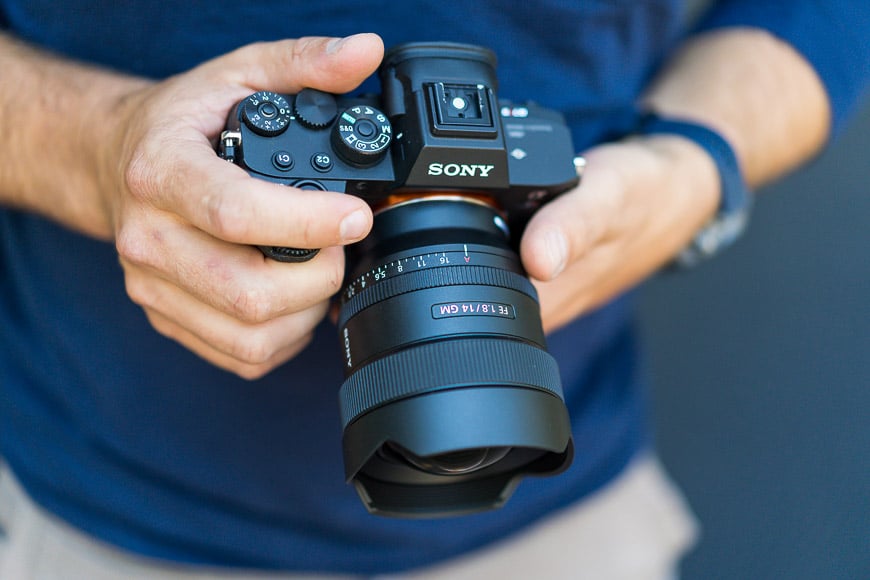
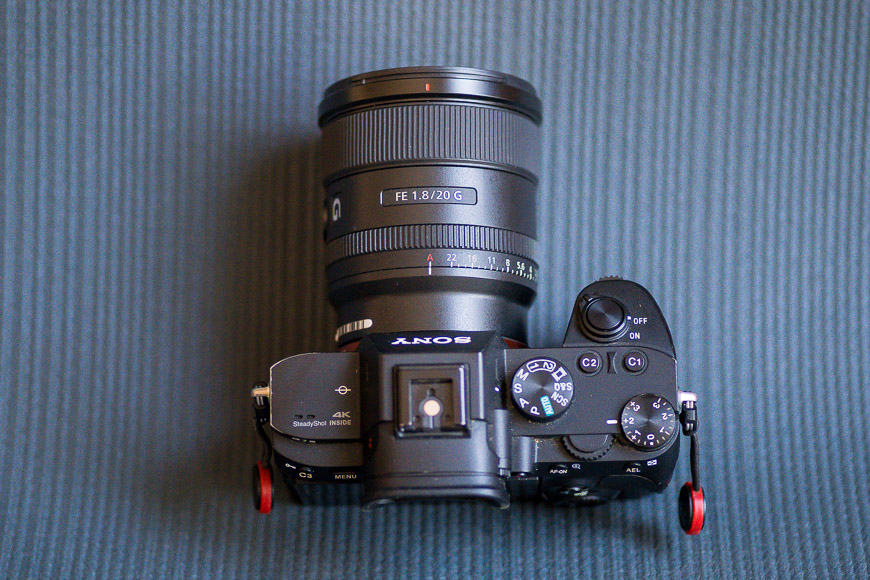
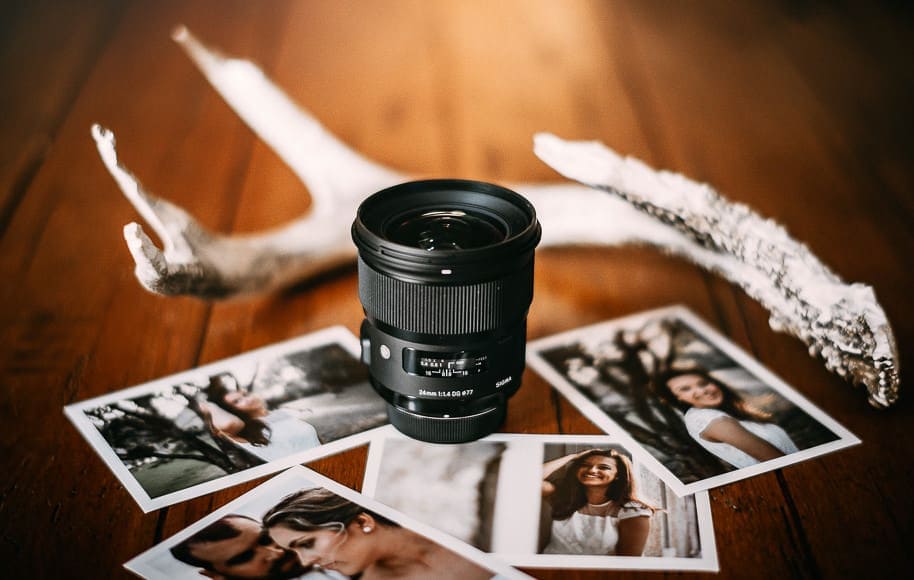




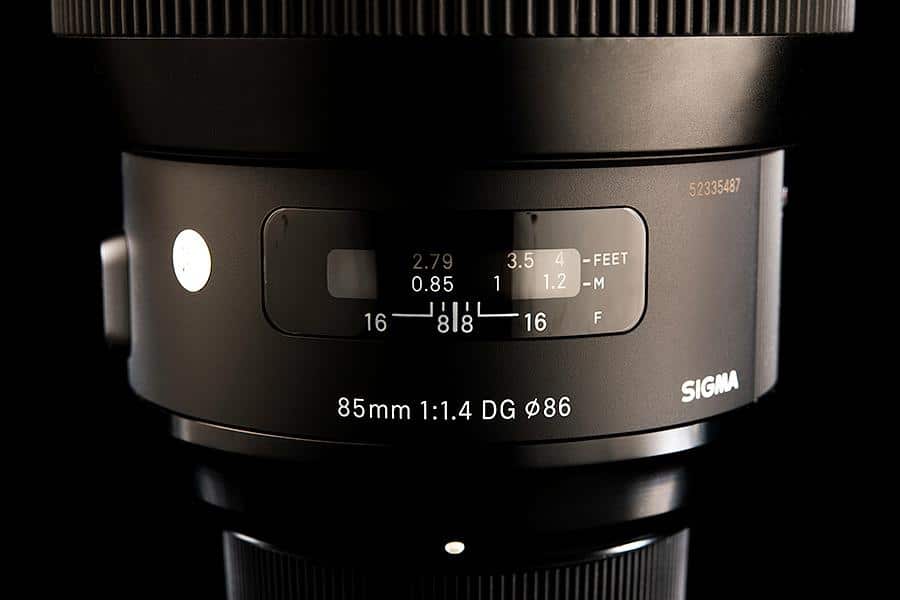














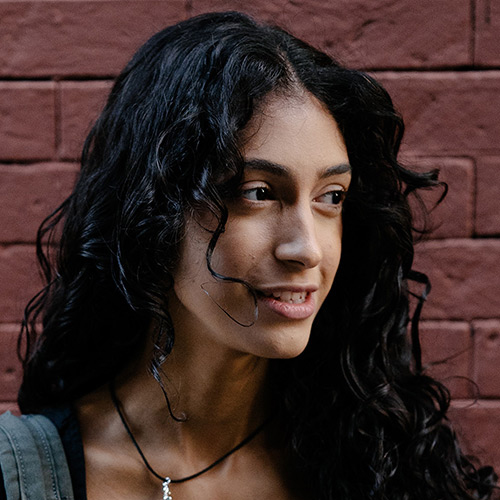


This list is rather dated – you are missing lenses announced in 2023 (like the important 70-200 f/4 G II Macro), and you list lenses like the 20-70 f/4 and the 300 GM only in a section for upcoming lenses (and the 300 GM was announced in November 2023, not early 2024).
BTW: You say choose the 28-75 unless you need the extra 2mm at the wide end – pretty sure that should be 4mm to the 24-70, and 8mm to the 20-70.
(1) How is the Sigma 24-70mm 2.8 for Sony mirrorless camera? Some reviews highly recommend it for the pricing & quality.
(2) In addition, if I only had one lens in my arsenal, is the Sigma 24-70mm a good choice?
Purpose: I’m interested in both pics and video (not commercial but just high quality pics and videos for personal use).
1) it’s excellent! 2) yes absolutely. Any 24-70 is a near-perfect all-rounder.
Hi Mark,
I am completely new to the camera world in the sense that I have never owned a full frame or an APS-C camera, but I do have a GoPro Hero 7, which I use for shooting dynamic video like when I go skiing . In order to get some more professional looking video footage though I was looking towards the Sony a6600, which can also serve me well for photography. To go with that camera I need a lens (I can only afford one good lens) that is travel friendly, since I am planing to go travelling as soon as the virus allows it. As mentioned, my focus is video, but I also want a lens capable for photography. I’m currently looking at the Sony 18-105mm f/4 OSS G-master and the Sony FE 28mm f/2, but I have also considered the Sigma 30mm f/1.8, the Sony 35mm f/1.8 OSS and the Sony 24mm E f/1.8 Sonnar T* ZA. I’m unsure of what focal length I like and what I’ll need for traveling, which is why the Zoom lens seems quite attractive, but the high aperture is holding me back and I can’t afford the f/2.8 variants. What do you recommend from the lenses above and do you have any other suggestions? Thanks so much for your time!
Hey Charles, my advice would be to buy a zoom since it offers a range of focal lengths, and travel with that for a while. Then when you return, check to see at which focal length you shot most photos, and that will help you decide on your next lens purchase (which should be a prime). Hope that helps!
Hello, I just preordered the Sony A7c to upgrade my YouTube Video and other social media channels. I do mostly YouTube beauty videos and reviews, but I would a more versatile lens. ex shooting pictures of my my family or travel. Is there a lens you recommend? I am so lost when I am researching. And when I am filmung my videos I don’t have much room to shoot. So the camera is maybe 1 or 2 ft in front me.
Thank You
Hey Sarah! At that distance, you’d need something wider than 24mm to ensure enough of your head is in shot.
Hi Mark! Awesome article about Sony lenses! It helped me to choose Sony E 35mm f/1.8 OSS for my Sony A6000. And now I’d like to have a wide-angle lens for shooting landscapes. Which one do you suggest to take – Laowa 9mm f/2.8 Zero-D or Rokinon 12mm f/2.0 NCS CS? Or maybe another one?
Thanks Bobby! The Rokinon has my vote ;-)
I have a couple of G Master Zooms, but I really ),really) like the 90mm Macro f2.8. Incredible! And also ‘long in the tooth’. Switch out your 85 1.8, and replace it with the 90.
Mark, great article and what I was looking for. Last fall I sold all of my Canon gear and purchased a Sony a7 III with a 24-70 2.8. I like to shoot my family, landscapes, cityscapes, and whatever I see walking around.
I use my current lens, as an everyday lens, though I find myself being lazy by just using the zoom to get the correct frame instead of thinking of the shot and positioning myself. Would purchasing a prime lens or two force me to actually think about the shot since I don’t have to worry about the zoom?
If so, what lenses would you recommend I put in my bag? Should I go with the first 3 that you purchased or a 35mm, 55mm, and 85mm or should I stay away from prime lenses and add a wide zoom and a telephoto lens?
Hey Jeff, I’d recommend you get a 35mm and an 85mm. You can use the APS-C crop mode on your a7III to cover 50-ish mm with the 35. Make sense?
Great, that makes sense. By the way, I love the information on your website. Thanks, Mark.
Thanks Jeff, I appreciate that!
I think it is worth pointing out that the 55mm f/1.8 is also just about the best lens if you want to shoot infra red. There are no hotspots as is often the case with modern lenses. I think it’s a fluke because the other lenses inthat range are useless for IR. Super sharp and compact.
Thanks for the tip, Andy!
Sorry, but unless the cameras are markedly different Down Under, this is in error: “FE lenses can be used on E mount cameras, but E lenses cannot be used on FE mount cameras.” All Sony mirrorless lenses have the same E-mount and all, regardless of format (full-frame or APS-C) can go onto any of their mirrorless cameras and will properly focus, etc. The image circle differs between formats, but mounts, flange distance and electronic contacts are the same on FE and E lenses. Page 14 of the Sony a7R II manual reads: “This camera is equipped with a 35 mm, full-frame CMOS image sensor. However, the image size is automatically set to that of the APS-C size setting and the image size is smaller when an E-mount lens compatible APS-C size is used (default settings).”
Technically, you’re right, Paul – it shouldn’t say they “can’t” be used on APS-C bodies, but rather, we don’t recommend it, since image quality suffers.
Honestly? Because a 42M full-frame Sony will produce an 18M (17,819,264) image using the APS-C setting with E lenses, providing ample resolution for a 300ppi tabloid-size (11″x17″) image, or a 71.778″ x 47.889″ image at 100% (72ppi).
What about the vignetting?
When used with APS-C E lenses, a full-frame camera can automatically set itself to APS-C format for clean images with no vignetting. Plus the cropped image fills the full-frame camera’s viewfinder while shooting in APS-C mode with an E lens. This can also be set manually so there is the option to vignette or not with an E lens.
Kind of feel like you should just make it clear up front that you’re focusing on full frame. You throw a few APS-C in, but miss key ones like the 16-55 f2.8 which is probably the best lens on the system if you’re an APS-C shooter.
We’re publishing a best APS-C lenses guide for the Sony system very soon, Mike, and rest assured, the 16-55mm will be given a thorough review ;-)
New to photography here. Learning about lenses is overwhelming. Thank you for this article. It helps. I do own a APS-C (A6600) and am looking forward to the guide Mike and the rest are putting together. How soon is “soon”? When would I be able to read it as I am in the market for an additional lens and would.
Nice camera, Janice! Here you go ;-)
Many third party lenses with a fraction prices can do the job competently with Sony lenses such as Sigma 14-24 f2.8, 20mm , 35mm, 50mm, 85mm F1.4. Tamron 17-28 and 28-75mm, 20mm, 24mm and 35mm f2.8. Samyang/Rokinon AF 14mm , 18mm, 24mm, 35mm F2.8 and 35, 50, 85 F1.4…. Why pay ridiculous price for Sony lenses ?
We’re reviewing several of those third party lenses this month, actually Thong. There’s some perceived value in owning own brand gear, but in most cases the performance is better… albeit marginally.
I was going to say that I’ve heard the new Sigma 24-70 or the Tamron 28-75 beat out the Sony 24-70 for being 95% the same lens for half the price
We’ve reviewed both those lenses and they’re certainly competitive! For some though, only the native lenses will do…
Mark,
Super article, thank you for taking the time.. riddle me this… I recently moved from a Nex5N to a 6300 and recently up to the A7Riv (used to be a Canon fan).. I bought two lenses forward being the Zeiss 16-34 F4 and the 100-400 GM… I’m itching to buy a 3rd lens (fill the gap or let the A7Riv sing) and wondered if you had an opinion.. Am hovering and researching like crazy the 55mm 85mm 90Macro and the 24-75mand perhaps the Tamron 27-75 + other. I did buy the 24-105 and honestly felt it was Ok but didn’t knock me over. I have also ordered and cancelled the 200-600 three times with immediate buyer worry… Thoughts on what you’d buy as your third ?… low light, prime, extra length, macro or fill the void ?.. Thx Guy
Wow, that’s quite the jump from an a6300 to an a7Riv, Guy! Nice!! Well, since you have wide and long covered, I’d invest in this if you want another zoom (and don’t want to stretch to this G Master, which is admittedly superior), or this 55mm if you want a versatile prime and don’t want to overlap any of your current focal lengths (I’d recommend at least one fast prime, to really see what your new camera is capable of!)
Thanks Mark.. so you wouldn’t recommend the 85GM then ?.. figured that and the 55 would have been on your pick as I am void of low light and primes …. I am likely a couple away, I don’t do portraits formally but find myself more doing them with wifey and dog.. so might risk a high end prime to give me a different road to tread also
Yep, I definitely do. That’s the hard thing with these ‘Best of’ posts – obviously I’d like to recommend all the most expensive G Master lenses, as quite frankly, they’re the best for what they do. However, they’re not the most cost-effective, and many photographers may not even require the advantages. Sony full frame cameras are so good with high ISO that f/1.4 isn’t always necessary, for example. However, yes, if you want the creamiest bokeh of any Sony lens, the 85 1.4 GM is up there!! Side note: 55mm is more versatile than 85mm, hence my recommendation to you when you suggested the two. Do you have any other questions?
Well seeing as you asked :-)
If I bought the 24-70GM (money aside) or the 55mm… at that range would the Zeiss be superior or is the 24-70 like a tube of primes ?.. I am a zoom guy and am tempted by primes to learn new tricks but versatility is a big factor for me.. reason I thought 85m was the 16-34 gets wide and versatile, 85 plops in the middle and the 100-400m picks up the reach.. 55 is also in same cameo.. but seeing as you asked I wonder if based on this then the natural choice was to sweep prime and mid with the 24-70 and the budget choice was the Tamron if I don’t want to spring for the GM ?
Thanks again for the advice… reality is there is never answer and likely this won’t be the last glass purchase but I am trying to avoid another backpack full of glass !
Scratch the last question I sent over, after researching everything I could find (image qual between the 55mm and the 24-70 GM at 55) there is little in it unless you super pixel peep. The main difference being weight and price and a prime pairing hamper vs. utility zooms…. I just ordered a 24-70 GM which gives me what I think is a great triple threat of lenses (16-34 Zeiss, 24-70 GM and 100-400 GM with 1.4x Teleconverter for icing)… So thank you again for your suggestions and article…
Amazing lens line up, Guy! You’ve got pretty much every length covered now. Time to get out there and shoot ;-) All the best!
Hi mark,
Thanks for the article , it’s very helpful.
I had recently bought a 7Aiii , with a Tamron 28-75 , which i found superb. I would like to add a prime lens : i was hesitating between the 55mm f/1.8 and the 85mm f/1.8 ? Whic when one do you advise me ? I would like to make some portraits, but don’t want to be stuck with a lens that i use exclusively for portraits (the 85mm)
Sounds like you need the 55mm then Ahmed! All the best.
Hello buddy! My name is Ajay from India… Actually I’m working as a product photographers… I’m using Nikon d5300 with 40mm f2.8 and 18-55mm kit lens… Right now I’m planning to buy sony A7 mark3 with tamron 28-75mm f2.8 lens and canon 5d markIV… Actually I’m not fully satisfied with nikon d5300 crop sensor camera that’s I want to updating my camera…can you please suggest me a perfect camera to buy for professional work like product photography and videography….natural colors matters to me alot it should be perfect…
Thank you
Hey Ajay – I appreciate your comment, but it’s not really relevant to this guide. I suggest asking in our private Facebook group – we’d be more than happy to help you there :-)
Hi Mark :)
I found this article really interesting, it has resolved many doubts, I just start taking the photography as something more than a hobby, I will definitely be aware of the information you share.
Thanks a lot!
Glad to hear it Itzel – thanks for letting me know!
Thanks for such a well rounded review! I switched from Canon to Sony a few years ago and upgraded to A7III this year. Up till this point I have been using Canon & vintage lenses with adaptors, but I’m looking to invest in native lenses and phase out most of my canon lenses.
I’ve just purchased the Sony FE 50mm 1.8 and trying to figure out what to look at next. I primarily shoot portraits in studio, however I also do a lot of environmental portraits and candid portraits. These sometimes can be in much smaller spaces and with lower ambient light
I’ve been making do with the Canon L 24-70mm f2.8 for these situations but wondering if I should be considering another wider angle prime instead of a native mid range zoom?
Thanks Angela, I’m glad it helped! Well, the Sony 24-70mm f/2.8 would be the obvious choice, but assuming you’re keeping your Canon version, I’d go for the Sigma 30mm f/1.4 – it’s great value and a useful focal length for enviro portraits. f/1.4 will be amazing for you in low light too. Hope that helps?
Hello Mark, I really liked your overview.
I enjoy shooting with my Sony A7iii and SEL85F18 lens for portrait. For budget reasons I extended my gear-set with Samyang/Rokinon AF FE native lenses, which looks cheap from build point of view but in turn they offer quite some impressive results in a lightweight body. I’m talking about Samyang AF 35mm f2.8 (kind of pancake) and the 45mm F1.8. What are your thoughts about those lenses and would you justify a delta of ~400$ to switch to the Sony 55 F1.8 ZA, which I really took in consideration?
Thank you!
I’d recommend you save up a little more and opt for this 55mm, Nicol! It’s one of the few Sony lenses that has any kind of ‘character’ to it – the focal length is unusual and the depth of field/sharpness are excellent. The Samyangs are great value for money (and I’m a big fan of pancake lenses), but the Sony is in a class of its own. Hope that helps!
I have a Sony A7iii and am looking for a lowlight lens for traveling. I am thinking of buying the 24-70 f2.8 but the weight concerns me. The other lens I have my eye on is the new 24 f1.4. It would be wonderful if I can bring one lens with me on a trip but I’ll settle for 2.
I am not a professional photographer but I have a very discerning eye. I’m chasing after sharp nighttime or dusk landscape photographs. Any suggestions would be greatly appreciated. Thank you.
Hey Jacqueline, I use and highly recommend this lens which is feather-light, and perfect for traveling. It’s f/2.8 so should be good enough in low light when combined with the high ISO performance of your a7iii. Is 35mm wide enough for you?
Hi Mark,
That was an excellent and informative page .
I am currently using A7iii combined with Sony 24-105 f4 G Lens.
I currently do
Portraits (I am training with professional photographers with models indoor & outdoor including street portraits).
I also do paid photography once a month in night clubs .
Please advise what NEW lens out there are best for what I do?
Thanks Manish. If I were you I’d get a fast prime lens to complement your zoom. You already have a wide range of focal lengths covered with your 24-105, so pick whichever length you use the most (you can use Lightroom to sort by focal length) and try and get something faster than an f/2 which could help for your night club work. This one is one of my favourites for on the dance floor, as you can get shots that make the viewer feel immersed in the action.
Mark,
Like to get your thoughts on the Zeiss Batis 40mm F2 to compliment the 85mm 1.8 (paired to A7III) primarily for low light events and environmental portraits. Focusing speed and accuracy are essential. 55mm 1.8 feels to close to 85mm and I can’t get behind the size and weight of the 35mm 1.4.
I have a fuji kit for all my other personal needs which I’m very happy with just need the extra stops of ISO performance and focus speed in lower light venues. Thanks
Hey Jim I don’t have any experience with the Batis 40mm in a professional setting, but Zeiss lenses in general are excellent, so I’m confident it’d be fine for events and portraits. Checking out the reviews here seem to support that. It’s also nice and lightweight. Have you also considered this 35mm Zeiss one? I’ve been using it with my a7III a lot over the past year and love it.
Hi Mark, this is a great review. Thank you very much. I am seriously thinking of two options:
1. Sony A7III, 85mm f1.8, 24mm f1.8 or f1.4
2. Fujifilm XT-3, 56mm f1.2, 16mm f1.4
I take landscape and portrait photos. What are your recommendations on the two cameras and the lens selection?
Thanks in advance for your kind advice.
Hey Burton, well, since this is a post about Sony lenses, I’d have the recommend the Sony option! Seriously though, they’re both great options. If you shoot a lot in low light, the Sony option is best.
Great information, thank you. Between the 50 1.4 and the 55; what is the best of the two
Depends what you need them for, Serge. 55 is sharper and faster (to acquire AF), but 50 is faster (larger max aperture) and obviously slightly wider too.
I have a question about the 85mm. I have the Sigma 70mm macro lens for the sony full frame camera. I bought the 85mm one sale and in your opinion, would it be worth it to keep both or would you use the 70mm for portraits as well?
I’d probably keep the 70mm for macro work, Erik. Very similar focal lengths, but different use cases.
Hi Mark- Wonderful site- thank you for all of your insight! I am considering investing in the a7iii and like everyone, I’m having trouble getting lenses. I will be doing a lot of outdoor photography- all individual and family portraits as well as some in studio budoir, maternity,etc
What would be my best two to three lenses? And should I be including a zoom for flexibility outdoors?
Also, I’ve read a lot about focusing problems with this system and I’m concerned about that, especially for outdoors, any thoughts? Seems really weird since I thought this camera and the R are known for their great focusing ability. And lastly, I’ve heard about problems with backlit photos facing the sun, which I will be doing. Is that with any lens in particular? Sorry for all the questions but I know you’re a great source of knowledge and experience. Thanks!!
Hey Stacey! I recommend you join our Facebook Group for multi-part questions like this, but I’ll do my best here :-) 1. These are the lenses I’d get: 24-70mm f.2.8, 85mm f/1.8, and if you have any money left over, the 35mm f/2.8 is a great walkaround lens too. I’d definitely recommend a zoom since you seem to be shooting a variety of subjects in a variety of locations – the flexibility of a zoom would help a lot, and 24-70mm is very versatile. 2. Focusing problems? Not heard of any! 3. Backlit photos – yes, Sony sensors don’t handle this as well as Nikon or Canon in my experience, but still nothing to worry about. Hope that helps!
Hi Mark
What are some good lenses to use for the Sony A7R iii and A7 ii which is compatible for the NEX 5? I believe the A7 ii can be switched to the APC-S crop factor?
Hey Gino, all Sony FE lenses are compatible with the E camera bodies, albeit at a ‘crop’ (1.5x multiplication of the focal length of the lens). Switching the APS-C to crop means that in theory you can use E lenses on your Sony A7 bodies, but I’d advise against it. I use the crop mode on my a7III to get extra reach out of my FE lenses. I’ll publish a post soon about my recommendations of lenses specific to Sony a7 bodies. Does that help you at all?
Have you tried the Sony 90mm f2.8? I hear it’s it’s really impressive.
Yep! It’s a great lens, albeit rather heavy and expensive. Personally I still prefer the 85mm f/1.8 though – lighter, cheaper and faster… although not a macro lens, obviously.
Hi Mark,
What a great review and summary, really love it!
I’m currently using A7ii with Canon 24-70 1.8 lens (using mount converter) for event photography (like wedding, birthday, or gatherings). However, my biggest obstacle on this is the AF performance.
I’m planning to invest more, by upgrade my body to A7iii OR my lens to 24-70 GM (can’t do both at same time as those will definitely break my bank).
Do you have any suggestions on which one is better option?
Also, you’ve mentioned 24-70 zeiss is outperformed by the GM one. Did you just talk on image quality, or does it also have far worse AF performance than the GM one?
Thanks in advance for your thoughts, greatly appreciated!
Hey Ed, I don’t really recommend Canon glass on a Sony body. Although it can work ok with adapters, the performance isn’t officially tested or supported by Sony. Sony glass on a Sony body will always be better, especially with AF. The a7ii is a great camera, but the AF is admittedly better on the a7iii. I’d recommend you try out a Sony lens on your a7ii first, and decide whether it’s the camera or the adapted lenses you’re using that’s the bottleneck to getting the most out of your existing camera. Hope that helps?
Hi Mark,
Thanks for an insightful and real-world perspective on these lenses. I especially appreciate how you described their pros, cons, and intended uses in every-day, layman terms that non-professionals, like me, can understand.
Having said that, I am a beginner looking to buy some better glass. I currently use the Sony a6500 and the SEL 18-135mm f/3.5-5.6 OSS lens that came with the bundle I bought. While that lens is great for a huge variety of focal lengths (for photos of my kids at outdoor swim meets and Ultimate Frisbee matches) it really lacks when I try to use it for indoor shots of birthday or dinner parties. I sometimes use the flash (tipped upwards to bounce off the ceiling) which helps a bit but often the photos just don’t look as pleasing to my eyes.
After much research I was torn between the Sigma 30mm f/1.4 and the Sony 35mm f/1.8 OSS that you recommend here. I even went as far as to read up on MTF charts (which I, admittedly, do not fully understand). And then I read further in your review about the Sony FE 28mm f/2 to complicate matters! I know you regard the Sony 24mm f/1.4 highly but I think my wife would not speak to me for a very long time if I bought that lens. I basically want the best “bang-for-the-buck” lens to fill that indoor need and possibly as an evening walk-around general purpose lens. Typically, I shoot straight to JPEG and do very little post-production work. Any tweaking needed is usually handled by iPhoto on my MacBook Pro.
Between the two Sony lens and the Sigma lens, is there one that you would give the edge to in my situation?
Thanks and keep up the great work of sharing your knowledge and expertise with the rest of us!
Hi Clay, thanks for your kind words and interesting comment. All the lenses you mention would be great with the a6500 (and I did laugh at the consequences of you buying the 24mm f1.4!!) In your situation, I’d go for the widest focal length with the fastest aperture in your price range. With the APS-C sensor of the a6500, it’d be nice to have something as close to a 35mm equivalent as possible – be it the Sigma 30mm or the Sony 28mm. These kinds of focal length are more versatile, and give you more bang for your buck. I hope that helps!
Hey there Mark,
I am a wedding photographer. a couple years ago I made an attempt to go mirrorless with the A7Mark2, but after a SD card malfunction decided to stay with my Nikon D750 camera system. Now that Sony decided to put two card slots in their A7mark3… well, I am ready for attempt number two. With Nikon system I mainly used the 24-70 and the 70-200 @ F2.8.
Now to decide on my lens choices. Looking at my data in Lightroom, I find that most of my images are shot at around 35 to 50mm. And at the top end around 135 – 200mm.
The main reason for me to switch to Sony is for me to lighten my load.
I am considering the 35mm @1.4 Gmaster as my primary lens and The 85mm @1.4 Gmaster as my other lens.
My fear is that I will miss the magical Image Quality of the Nikon 70-200.
The 85mm will be a whole lot lighter than the Nikon 70-200… but will I miss the image quality of the 70-200?
Hey Andy – no, you won’t ;-) The 85mm f/1.4 from any brand is a magical lens, and in my opinion, far superior to the 70-200 (when shot at 85mm, I mean). Obviously you may miss the versatility of your zoom lens, but I don’t think that’s what you’re referring to here. Also it’s worth considering that anything over 85mm tends to produce a rather ‘disconnected’ image – shot at 200mm, your bride won’t look as ‘engaging’ to the viewer as when shot at 85mm (or wider), for example. The 35mm f/1.4 is an excellent lens too. I’m sure you won’t regret your switch! (Incidentally, stay tuned as I’ll release a ‘my switch from the D750 to the a7III’ video soon with all my thoughts…)
A very interesting and user friendly summary.
Joined the convert train to Sony mirrorless and purchased the a7iii; now I’m trying to pick lenses along with everyone else here. This is by far the clearest and most thoughtful post/review I’ve found – thank you!
I’ve tested the 24-70 f/2.8 and likely will end up with it for versatility sake; I rarely use much zoom and love the performance despite the weight factor. I mainly shoot landscape and environmental portraits for nonprofits and would like a complimentary prime that is lighter and easier to trek with; I primarily shot 50mm on my old Nikon setup. Certainly drawn to the 55mm 1.8 for its universal good reviews but periodically find myself wishing for a little wider in closed in spaces. Down the road I hope to be able to pick up the 16-35mm, so from a doubling up and weight factor, I’m not sold on the 35mm 1.4. Does the 55mm seem like a good place to start, or is there another prime I’m missing?
The 55 is an excellent place to start Gretchen! If you’re going for the 16-35 and don’t need the low light performance of an f/1.4 lens like the 35mm, the 55mm will be an excellent portrait lens.
I’m about to ‘pull the trigger’ on purchasing the Sony A7 III, and am having a (sort of) hard time looking for a 2 lens complement. My photographic choices are for landscapes (mountains, deserts etc.), air shows / action, and African safari / animals.
My intial thoughts are the Sony FE 100-400mm f/4,5-5.6 OSS G Master and the Sony FE 24-105mm f/4 G OSS. I know that the zoom is a heavy ‘beast’ but, for its ability, I’m happy to be carrying it for both landscape, air shows and animals in the bush. However, I’m also considering swapping out the 24-105mm f/4 and replacing it with either the 16-35 G Master or the 24-70mm G Master you mention above.
I know that will leave a gap but I’ll just have to move my feet a little more. I’d certainly like to capture sunrise and sunsets on a month-ling 4×4 trek into the bush.
What are your thoughts Mark?
Hi Bob, wow that’s quite a decision! I’d say that unless you need the low light capabilities of the f/2.8 lenses, the other zoom lenses you mention there will be great. Between the 100-400 and 24-105, it’s really a matter of how much reach you need. I prefer the versatility of having a wide-to-long zoom, rather than a long-to-longer. Hope that helps?!
Hi Mark,
Thanks for the great article. Like the other commenter (also called Simon) I too am about to invest in the A7iii and am also looking at buying two lenses to begin with.
I live abroad and travel a lot, so am generally interested in a variety of possible shots – landscapes, city streets, and close-ups of flora and fauna (my partner has a 70D with zoom lens so I don’t need to snap birds at the tops of trees as she can cover that).
I am taken with the 85mm 1.8, but I wonder, will this lens work in macro surroundings? I know it isn’t a macro lens, but would it be suitable for close ups of flowers, insects etc. as well as letting me snap street seems and portraits?
Like other Simon, I am also attracted to the 24-70mm for its versatility (wide angle through close ups) but do you think a 35mm 1.8 would be more suitable for the types of photograph I’ve mentioned above… or should I go even wider and get a 24mm prime?
Any thoughts… greatly appreciated. Your explanations of the various lenses and accessories for Sony cameras are the most helpful I’ve read.
Glad to hear it Simon! Thanks for the kind words. To answer your questions, yes, you’d be able to take close ups of flower etc, but not to the extent of a macro lens. If you wanted to get closer, you could always crop using Lightroom, or even set up a custom button on the A7iii to crop to APS-C format (this is what I do to extend the reach of my lenses).
If you invest in the 85mm, I’d recommend a 35mm to complement it. The f/1.4 is excellent but heavy and expensive – the 35mm f/2.8 is a great alternative which is much smaller/lighter.
As you say you travel a lot, I’d steer clear of any heavy zoom lenses like the 24-70. As attractive a zoom range as it is, it makes the Sony body feel unbalanced, and will be a pain in the a** to travel with! That’s just my opinion though – many traveling photographers happily use big zoom lenses!
Hope that helps?
Very helpful and informative with comprehensive information given thank you.
I’m about to invest in a sony A7 mark 3 (couldn’t justify the R for 1200 more) however im getting bamboozled with lense options. im thinking the 24-70 is a good all rounder G master series. however, why would i then look at getting another such as 35mm or 50mm if this is covered in one lense?
would you advise getting something like the 24-70 and then an 85.. eventually id get the 200mm but the camera and one lense is breaking my bank.
could you give me some tips if say you had to get two lenses, which would you go for? i mainly want to capture candid street shooting, and landscapes etc.. so again im a little lost on the direction i take for lenses.
great website by the way =]
Hi Simon! Thanks for the kind words. The 24-70 is an incredible all in one lens, and you’re right in thinking it covers the focal lengths of the 35, 50, and everything else in between 24-70… but not the apertures.
Whilst f/2.8 will be fine in daylight situations, it may struggle in low light, even with the excellent high ISO performance of the Sony a7III.
Then there’s the size and weight of those zoom lenses, which won’t be ideal for candid street shooting. For landscape I guess it’d be fine, as long as you don’t mind the additional bulk.
Finally price is a big factor – you can get a few great prime lenses for the price of one G Master zoom.
Hope that helps!
Mark
Great article. I’ve been using my a7rii for over a year now with the 35mm f2.8 ZA and have been enjoying it so far. I’ve been using it for travel and events, and I have to say that the image quality is great. Just want add that with the R, I can crop my images without losing too much resolution. So maybe don’t strike off the R too quickly.
I do agree with Mark that size and weight is critical for travel photography, as you will be carrying it for the entire day, probably on foot, on top of your other accessories and necessities. You wouldn’t want to be put off with the weight and ending up leaving your camera in the hotel.
Also want to ask Mark, if you will be doing another article of other brands of lens for the sony body. I know that Samyang has a decent few that won’t break the bank like Sony’s.
Thanks Clifford, glad to hear it! Yes, you’re right, the R is still a great camera, especially when combined with the APS-C crop functionality which effectively extends any of your lenses by 1.5x as you know. For a wedding shooter like me, the huge file sizes were annoying, but I guess for any other photographer shooting lower volume, this won’t be an issue.
To answer your question, I’ll be looking into Sigma lenses for Sony very soon, and may possibly throw in some other 3rd party brands. Samyang does some great ones… stay tuned!
I am trying to figure out which lens or lenses to get to just get started in photography. I have an A7iii with the kit lens which is a FE 28mm-70mm F3.5-5.6 and a FE 50mm F1.8. Prior to this camera I had never paid attention or known anything about shooting. Now I wish I had done a bit of research aside from what the best camera in my budget to get. Anyway, currently I have mainly been shooting indoor baby, portrait, and small gatherings such as birthdays and holidays. I am stuck while trying to chose between either a good 55mm, 85mm, 90mm macro, or trying to get either a very good zoom 24mm-70mm, or 70mm-200mm F4, I would obviously get both 24mm-70mm GM and 70mm-200mm F2.8 if it were in my budget now. But I just want what everyone wants and that’s the best at the best price. I would like your advice on picking the best option. I have found out it is alot harder to get in a childs face with a camera trying to get a good shot. That’s why I was really considering the zoom. I will eventually get some other lenses but at the moment that’s what I’m up against.
Hi Imran, it sounds like with the 50mm f/1.8, you already have a good portrait lens. What do you feel it’s lacking?